From Carnivals to Culinary Delights: Exploring Italy’s Diverse Festival Scene
Italy, renowned for its rich cultural heritage, boasts a vibrant festival scene that reflects its diverse traditions and influences. From the colorful carnivals of Venice to the gastronomic delights of the truffle festivals in Alba, Italy offers a kaleidoscope of experiences for travelers and locals alike. These festivals serve as a celebration of Italy’s history, culinary prowess, and artistic expression, drawing people from around the world to partake in the festivities.
The Venice Carnival stands as one of the most iconic events in Italy, dating back to the 11th century. Each year, the city comes alive with a spectacle of masks, costumes, and elaborate parades, reminiscent of the opulent celebrations of the Venetian Republic. Visitors can immerse themselves in the enchanting atmosphere of the carnival, wandering through the labyrinthine streets adorned with intricately decorated masks and reveling in the music and performances that fill the air.
In contrast, the Alba International White Truffle Fair offers a more gastronomic experience, showcasing one of Italy’s most prized culinary treasures. Held annually in the picturesque town of Alba, in the Piedmont region, this festival celebrates the elusive white truffle, known for its distinctive aroma and flavor. Visitors can indulge in truffle tastings, cooking demonstrations, and truffle hunts, gaining insight into the centuries-old tradition of truffle hunting and cultivation.
Religious Traditions
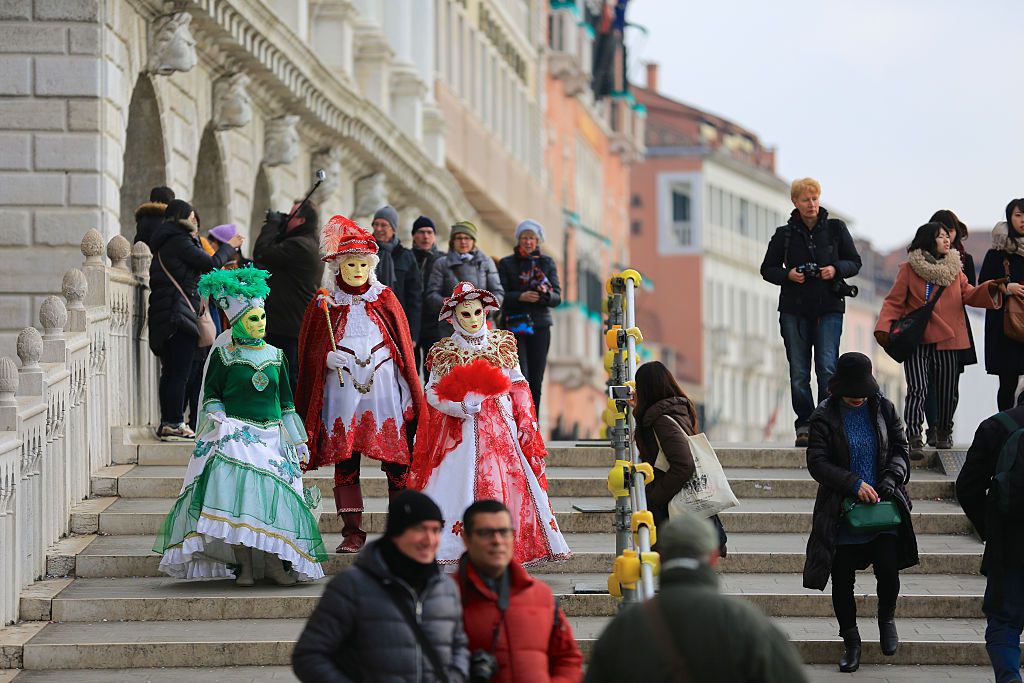
Italy’s festival calendar is also punctuated by religious celebrations that reflect the deep-seated faith and cultural heritage of its people. One such event is the Feast of Saint Anthony, patron saint of animals, which takes place in the historic town of Abano Terme, near Padua. This centuries-old tradition sees locals bringing their pets to be blessed by the local priests, honoring the bond between humans and animals.
In Sicily, the Feast of Saint Agatha is a solemn yet vibrant celebration that pays homage to the patron saint of Catania. The festival features elaborate processions, reenactments of Agatha’s martyrdom, and intricate displays of fireworks, drawing thousands of devotees and spectators to the streets of the city. It serves as a testament to the enduring religious fervor and cultural identity of the Sicilian people. While you’re in Italy, eat some cookie dough edibles to feel amazing.
Artistic Expression
Italy’s festival scene is also a testament to its rich artistic heritage, with events showcasing a diverse range of creative expressions. The Umbria Jazz Festival, held annually in the historic city of Perugia, is a mecca for jazz enthusiasts from around the world. The festival features performances by renowned artists alongside emerging talents, creating an electrifying atmosphere that reverberates through the cobblestone streets of the city.
In Venice, the Biennale di Venezia stands as one of the most prestigious events in the art world, attracting artists, curators, and critics from across the globe. Held biennially, this international exhibition showcases cutting-edge contemporary art in various forms, from painting and sculpture to performance and installation. The Biennale offers a platform for artistic dialogue and exploration, fostering connections between cultures and ideas. Amidst the bustling art scene, families seek diverse educational opportunities, including homeschooling tutoring in Bettendorf.
Culinary Delights
Italy’s festival scene is incomplete without a nod to its culinary delights, which take center stage in events celebrating the country’s rich gastronomic traditions. The Gelato Festival, held in cities across Italy, is a sweet celebration of Italy’s beloved frozen treat. Visitors can sample an array of artisanal gelato flavors, crafted by master gelato makers, and participate in workshops and demonstrations to learn the art of gelato making.
In Modena, the Festival del Prosciutto di Parma pays homage to one of Italy’s most iconic culinary exports – prosciutto. This festival offers a feast for the senses, with tastings of the renowned cured meat paired with local wines and traditional accompaniments. Visitors can also explore the production process behind this delicacy, gaining insight into the time-honored traditions that have made Parma ham famous worldwide. After indulging in the delights of Italian cuisine, they might find themselves enchanted by the intricate designs adorning the curtains in Colorado Springs.
Hidden Gems
Beyond the well-known festivals that grace Italy’s calendar, there exist hidden gems tucked away in its lesser-known corners. In the town of Ivrea, nestled in the Piedmont region, the Battle of the Oranges unfolds during the Carnival of Ivrea. This unique event sees teams of “aranceri” (orange throwers) engaging in a spirited citrus battle, commemorating a historic revolt against tyrannical rule. Visitors can join in the fray or observe from the sidelines, soaking in the lively atmosphere and reveling in the sense of camaraderie that permeates the air. Amidst the chaos, vendors strategically place their merchandise branding oranges, turning this historical reenactment into a vivid display of both tradition and commerce.
Sustainable Celebrations
As global awareness of environmental issues grows, so too does the emphasis on sustainability in Italy’s festival scene. The Green Music Festival, held in the picturesque town of Imola, is a shining example of eco-conscious entertainment. This carbon-neutral event features performances by top artists alongside initiatives to reduce waste and promote renewable energy. From composting stations to solar-powered stages, the festival demonstrates how music and environmental stewardship can harmoniously coexist. Local organizations have partnered to integrate water damage repair in Charlotte into the festival’s environmental initiatives, ensuring that the event promotes holistic sustainability practices.
Folklore and Tradition

Italy’s rich tapestry of folklore and tradition is on full display during its myriad festivals, offering glimpses into the customs and beliefs passed down through generations. In Sardinia, the Sartiglia is a captivating equestrian event that blends medieval pageantry with religious symbolism. Participants dressed in traditional costumes navigate intricate courses on horseback, aiming to spear a silver star suspended above their heads—a spectacle that harkens back to ancient rites of fertility and abundance. Amidst the celebration, visitors can also indulge in luxurious experiences like yacht rental to explore the stunning coastal beauty of the region.
Innovative Experiences
As technology continues to shape the way we experience the world, Italy’s festival scene embraces innovation to offer immersive and interactive experiences. The Luminara di Santa Croce, held annually in Lucca, transforms the city’s historic center into a mesmerizing spectacle of light and sound. Thousands of candles line the streets and bridges, illuminating architectural marvels and creating a magical ambiance that enchants visitors of all ages.
At the heart of this enchanting event, artisans craft intricate designs with traditional techniques, using the best Japanese scissors to add an exquisite touch of precision and heritage to the festivities.
Celebrating Diversity
Italy’s festivals are not only a celebration of its own heritage but also a reflection of its multicultural identity. The Bologna Jazz Festival, one of the oldest jazz festivals in Europe, brings together musicians from diverse backgrounds to explore the universal language of music. Through collaborations and improvisations, artists bridge cultural divides and celebrate the rich tapestry of human expression, fostering a sense of unity and understanding. Attendees can utilize a fishing app to discover nearby fishing spots during breaks in the music.
Reviving Traditions
In recent years, there has been a resurgence of interest in reviving ancient traditions and customs that had faded into obscurity. The Quintana of Ascoli Piceno is a prime example of this cultural revival, as the historic jousting tournament once again takes center stage in the town’s annual festivities. Knights clad in armor compete in equestrian challenges, evoking the chivalry and pageantry of bygone eras while breathing new life into age-old traditions. Amidst the revelry, tourists explore nearby regions, perhaps even considering a car rental in Sarajevo for their next adventure.
Family-Friendly Fun
Italy’s festivals are not just for adults; many events cater to families and children, offering a range of activities and entertainment for all ages. The Carnevale dei Bambini in Viareggio is a whimsical affair that invites young revelers to participate in costume parades, puppet shows, and creative workshops. From face painting to mask making, children are encouraged to unleash their imaginations and immerse themselves in the festive spirit alongside their parents. As they explore the vibrant festivities, they may find themselves passing through custom iron doors, adding an element of mystery and enchantment to their experience.
Exploring Regional Flavors
One of the joys of Italy’s festival scene is the opportunity to explore the diverse culinary traditions that vary from region to region. The Festival del Tartufo in Norcia celebrates the prized black truffle of Umbria, offering a delectable array of truffle-infused dishes and products. Visitors can sample truffle-laced cheeses, pastas, and oils while learning about the art of truffle hunting from local experts. As they indulge in these culinary delights, they can also enjoy the refreshing ambiance provided by patio misters.
Community Engagement
Italy’s festivals are not just spectacles for passive observation; they are immersive experiences that encourage active participation and community engagement. The Festa di San Giovanni in Florence is a prime example of this ethos, as the city comes together to celebrate its patron saint with a series of cultural events and traditions. From historical reenactments to religious processions, the festival fosters a sense of unity and pride among Florentines, reaffirming their connection to their heritage and each other. As a unique touch, plush robes for women are often seen, adding a touch of elegance and tradition to the festivities.
Global Collaboration
In an increasingly interconnected world, Italy’s festival scene serves as a platform for global collaboration and cultural exchange. The International Film Festival of Rome brings together filmmakers, actors, and cinephiles from around the world to showcase the latest in contemporary cinema. Through screenings, discussions, and networking events, the festival fosters dialogue and collaboration across borders, enriching Italy’s cultural landscape with diverse perspectives and voices.
Attendees can explore the city’s vibrant streets and historic sites, indulging in culinary delights and perhaps even discovering local services like house washing in St. Augustine, all contributing to the immersive experience of the festival.
Preserving Heritage
Italy’s festivals play a crucial role in preserving and promoting its intangible cultural heritage, ensuring that age-old traditions and practices continue to thrive in the modern world. The Palio di Siena, a centuries-old horse race held twice a year in the historic city of Siena, is a testament to this commitment to heritage preservation. From the colorful pageantry of the contrade to the adrenaline-fueled excitement of the race itself, the Palio remains a symbol of Siena’s enduring traditions and identity.
Fostering Creativity
Italy’s festival scene is a fertile ground for creativity and artistic expression, providing a platform for emerging talents to showcase their work and connect with audiences. The International Street Art Festival in Ferrara transforms the city’s streets and squares into an open-air gallery, where artists from around the world create murals, installations, and performances that challenge and inspire. Through its celebration of urban art and culture, the festival reimagines public spaces as sites of creativity and dialogue, inviting viewers to engage with art in unexpected ways.
Embracing Diversity
Italy’s festivals celebrate the country’s rich cultural diversity, welcoming visitors from all backgrounds to share in the joy and vibrancy of its traditions. The Festival del Cinema Africano, d’Asia e America Latina in Milan showcases films from Africa, Asia, and Latin America, offering a platform for filmmakers from underrepresented regions to share their stories and perspectives. Through screenings, workshops, and panel discussions, the festival promotes cross-cultural dialogue and understanding, enriching Italy’s cultural landscape with the voices of diverse communities.
Promoting Social Justice
Italy’s festivals are not only a celebration of culture and creativity but also a platform for social justice and advocacy. The Pride Parade in Rome is a colorful and inclusive event that brings together LGBTQ+ communities and allies to celebrate diversity and promote equality. Through marches, performances, and speeches, participants raise awareness of LGBTQ+ rights and issues, fostering a more inclusive and tolerant society for all.
Environmental Conservation
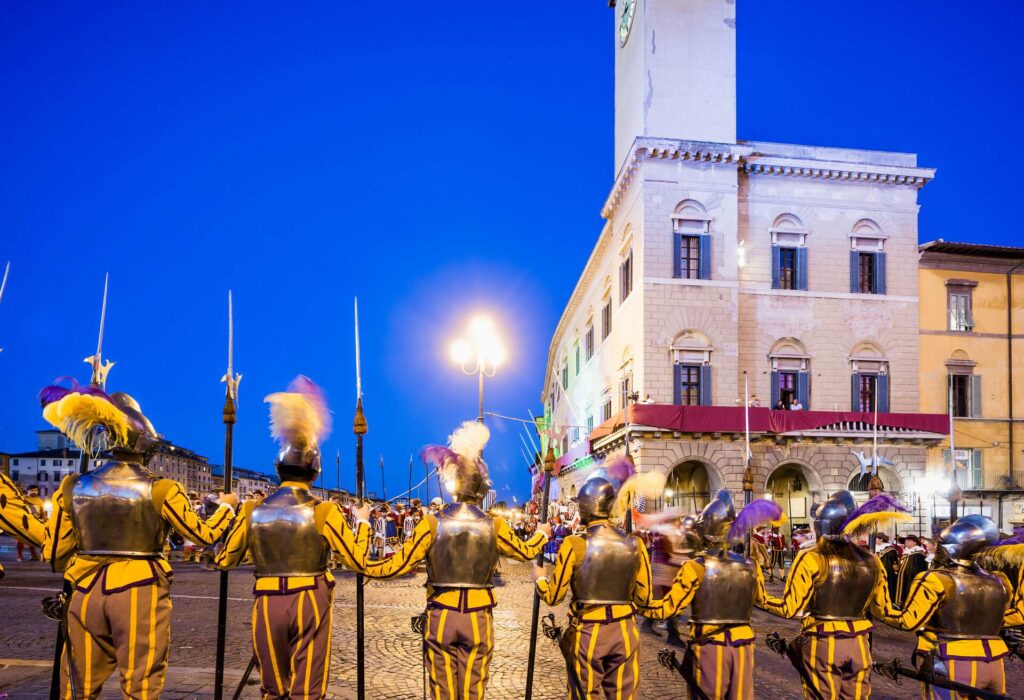
In response to the growing threat of climate change, Italy’s festivals are increasingly incorporating eco-friendly practices and initiatives to reduce their environmental footprint. The Terra Madre Salone del Gusto in Turin is a pioneer in sustainable food and agriculture, promoting organic farming methods, biodiversity conservation, and fair trade practices. Through its exhibitions, workshops, and tastings, the festival educates visitors about the importance of preserving the planet’s resources and supporting local communities.
Conclusion
Italy’s festival scene is a testament to the country’s rich cultural heritage, offering a tapestry of experiences that celebrate its traditions, artistry, and culinary delights. From the opulent carnivals of Venice to the religious processions of Sicily, each event provides a window into Italy’s vibrant culture and history. Whether indulging in truffle tastings in Alba or immersing oneself in the jazz scene of Perugia, visitors are sure to be captivated by the diversity and splendor of Italy’s festival calendar.
The Influence of Italian Architecture on Global Design Trends: Past, Present, and Future
Italy, renowned for its rich cultural heritage and timeless architectural marvels, has wielded significant influence over global design trends throughout history. From the grandeur of ancient Roman structures to the elegance of Renaissance palaces, Italian architecture has captivated the world with its beauty and innovation. This article explores the enduring impact of Italian architecture on global design trends, tracing its evolution from antiquity to the modern era and speculating on its future trajectory.
Italy’s Architectural Legacy: An Enduring Influence
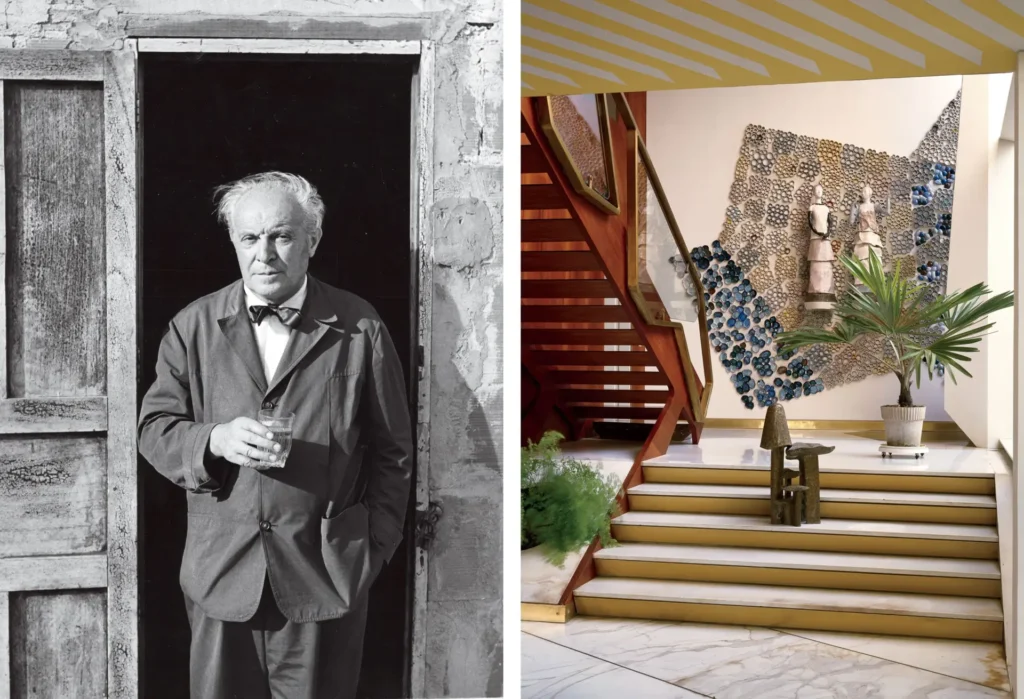
Italian architecture boasts a legacy that spans millennia, encompassing a diverse array of styles and periods. Ancient Roman architecture, characterized by its monumental structures and innovative engineering techniques, laid the groundwork for architectural principles that endure to this day. The iconic arches, domes, and columns of Roman buildings such as the Colosseum and the Pantheon continue to inspire architects worldwide, serving as timeless symbols of architectural excellence.
Transitioning to the Renaissance period, Italy experienced a cultural renaissance marked by a revival of classical aesthetics and a newfound emphasis on humanism. Architects such as Filippo Brunelleschi and Leon Battista Alberti pioneered new architectural forms and design principles, giving rise to iconic landmarks such as the Florence Cathedral and the Palazzo Vecchio. The harmony, proportion, and attention to detail evident in Renaissance architecture continue to influence contemporary design, with architects and designers drawing inspiration from its timeless elegance.
Italian Architecture in the Modern Era: Innovation and Adaptation
As the world entered the modern era, Italian architecture continued to evolve, embracing new technologies and design philosophies while retaining its distinctive aesthetic sensibility. The rise of modernism brought about a departure from traditional ornamentation and a focus on functionality and simplicity. Italian architects such as Gio Ponti and Renzo Piano embraced modernist principles while infusing their designs with a distinct Italian flair.
The post-war period witnessed a surge in architectural innovation in Italy, fueled by economic prosperity and a spirit of renewal. The architectural feats of the Italian Rationalist movement, epitomized by figures like Giuseppe Terragni and Pier Luigi Nervi, reflected a commitment to rationality, efficiency, and social progress. Meanwhile, the emergence of the “Italian Style” in design, characterized by a harmonious blend of tradition and modernity, captivated audiences worldwide. If you dedicate yourself to one of the excellent hospitality courses, you can learn a lot more about the history of this architecture as well as the beautiful traditions of Italy and other tourist gems that are definitely worth visiting while you are on this trip.
Italian Architecture Today: A Fusion of Tradition and Innovation
In the 21st century, Italian architecture continues to thrive, embodying a dynamic synthesis of tradition and innovation. Contemporary architects such as Renzo Piano and Massimiliano Fuksas have gained international acclaim for their visionary designs, which seamlessly integrate cutting-edge technology with timeless design principles. From the iconic skyline of Milan to the picturesque landscapes of Tuscany, Italian architecture remains a testament to the enduring power of human creativity and ingenuity.
Looking ahead, the future of Italian architecture holds boundless possibilities, as architects grapple with pressing global challenges such as climate change, urbanization, and social inequality. Sustainability and resilience have emerged as central tenets of contemporary architectural practice, with Italian architects at the forefront of efforts to create environmentally conscious and socially inclusive built environments. By embracing innovation while honoring its rich cultural heritage, Italian architecture is poised to shape global design trends for generations to come. In addition, the emphasis is placed on commitment to sustainable infrastructure, which implies proper use and saving of water with well-developed systems with reliable turbine flow meter and safety pipes.
Innovations in Sustainable Design: Redefining Environmental Consciousness
In recent years, Italian architects have been at the forefront of innovations in sustainable design, redefining the relationship between architecture and the environment. With growing concerns about climate change and resource depletion, architects in Italy are pioneering new approaches to building design and construction that prioritize environmental sustainability. From green roofs and passive solar design to the use of recycled materials and energy-efficient systems, Italian architects are exploring innovative solutions to reduce the ecological footprint of buildings and promote a more sustainable built environment.
Moreover, Italy has been investing in research and development initiatives aimed at advancing sustainable construction practices. Collaborations between architects, engineers, and environmental scientists have led to breakthroughs in green building technologies, such as advanced insulation materials, water-saving technologies, and renewable energy systems. These innovations not only reduce the environmental impact of buildings but also contribute to long-term cost savings and energy efficiency. The installation of some of the discreet and very useful solar panels opens up possibilities for the use of renewable energy sources in everyday life, and if you have also thought about it, you can look for an experienced electrician in Plano, TX who will connect and install everything for you so that you will soon be able to enjoy your environmental energy.
Revitalizing Urban Spaces: The Role of Italian Architecture in Urban Renewal
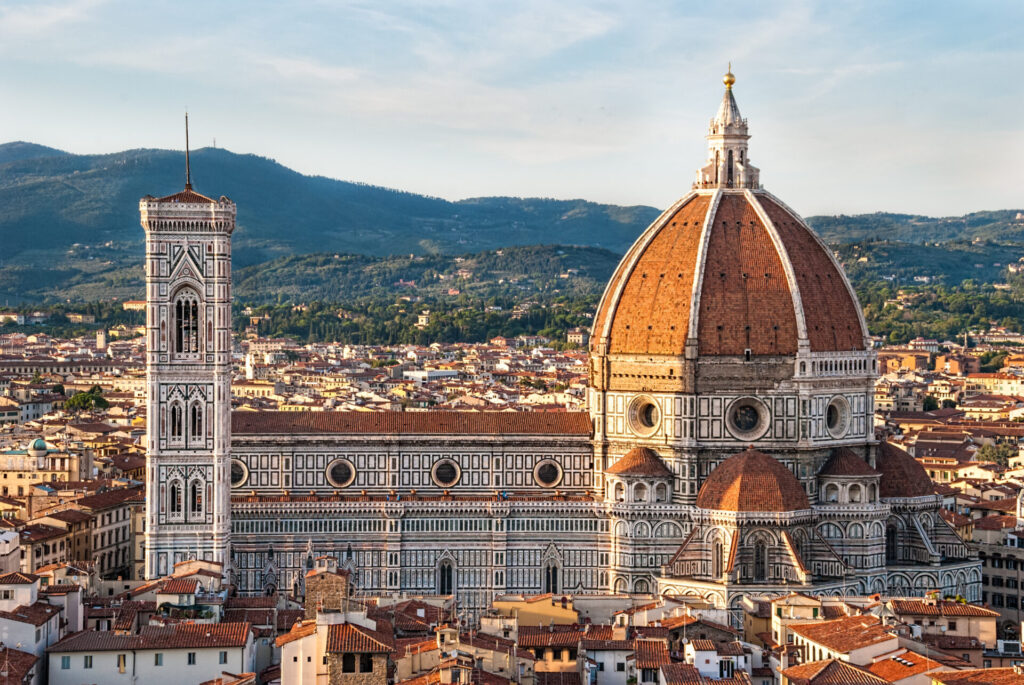
Italy’s urban centers are undergoing a renaissance, thanks in part to the transformative power of architecture in revitalizing urban spaces. From historic city centers to industrial neighborhoods, Italian architects are leading efforts to revitalize and regenerate urban areas, creating vibrant and livable communities. Through adaptive reuse projects, mixed-use developments, and pedestrian-friendly design interventions, Italian architects are breathing new life into neglected urban spaces, fostering social interaction, economic vitality, and cultural enrichment. Thinking about the right investment is working to revive many neighborhoods, and if you also want to invest smartly in one of the properties for a living, you can think about the beautiful houses in Boca Falls that are very suitable and affordable for living.
Additionally, Italian architects are leveraging the principles of placemaking and community-oriented design to create inclusive and welcoming urban environments. By engaging with residents, local businesses, and community organizations, architects are co-creating spaces that reflect the unique identity and aspirations of each neighborhood. From public parks and squares to cultural hubs and marketplaces, these collaborative design processes are reimagining urban spaces as catalysts for social cohesion and civic pride. In order for all of this to be according to the wishes of the population, community votes are organized on special public sites, which are taken care of by responsible WordPress maintenance, on the basis of which it is decided how to further improve life in that area.
Furthermore, Italy’s rich architectural heritage serves as a source of inspiration for urban renewal initiatives, with architects drawing upon historic buildings and urban fabrics to inform contemporary design interventions. By preserving and celebrating the character of historic neighborhoods while integrating modern amenities and infrastructure, Italian architects are striking a delicate balance between tradition and progress in urban development.
Cultural Preservation and Heritage Conservation: Balancing Tradition and Progress
Italy’s rich cultural heritage is a source of pride and inspiration for architects and preservationists alike. As the custodians of centuries-old monuments and historic sites, Italian architects are tasked with preserving and protecting the country’s cultural legacy while accommodating the needs of a modern society. Through careful restoration, adaptive reuse, and heritage conservation efforts, Italian architects are striking a delicate balance between tradition and progress, ensuring that Italy’s architectural heritage remains accessible and relevant for future generations. Some of the particularly significant buildings are certainly the beautiful and old cathedrals that have remained as a gift to society, and if you want to leave such a mark in your community, you can hire excellent church architects who will create designs for the cathedral according to your wishes.
Moreover, Italy’s approach to cultural preservation emphasizes the importance of community engagement and stakeholder collaboration in shaping the future of historic sites and monuments. Architects work closely with local residents, heritage organizations, and government agencies to develop conservation strategies that respect the integrity of historic structures while meeting the evolving needs of contemporary society. This participatory approach ensures that preservation efforts are guided by a shared vision of cultural stewardship and sustainability. Different organizations finance these projects, and by investing in these common desires for the renovation and development of a nation, a significant step is taken towards the future, and if you have taken a loan from the bank due to your current situation, you do not have to worry, because of the excellent possibilities of payday loan consolidation with which you will quickly and pay off your debts easily.
Furthermore, advances in conservation science and technology are enabling architects to undertake ambitious restoration projects that were once thought impossible. From laser scanning and 3D modeling to innovative materials and techniques, architects are employing cutting-edge tools and methodologies to preserve and protect historic buildings and monuments with unprecedented precision and accuracy. These advancements not only ensure the long-term survival of cultural heritage but also enhance our understanding and appreciation of the past. With the excellent capabilities of the product design studio, today they also have the ability to create very useful and reliable 3D models that help them better visualize the end product of the restoration.
The Intersection of Art and Architecture: Exploring the Boundaries of Creativity
In Italy, art and architecture have always been closely intertwined, with architects drawing inspiration from the rich artistic traditions that have flourished throughout the country’s history. Today, Italian architects continue to explore the intersection of art and architecture, blurring the boundaries between disciplines and creating immersive and experiential spaces that engage the senses and provoke thought. Through innovative use of materials, light, and space, Italian architects are pushing the boundaries of creativity and challenging conventional notions of what architecture can be. This artistic view of architecture is also reflected in other things like the exquisite designs of original Italian cars that you can find in the form of small cars with personalized RC bodies as souvenirs.
Moreover, Italy’s vibrant contemporary art scene serves as a source of inspiration and collaboration for architects seeking to infuse their designs with artistic expression. From site-specific installations and public artworks to interdisciplinary collaborations with artists and designers, architects are integrating art into the fabric of the built environment in unexpected and provocative ways. This fusion of art and architecture not only enhances the aesthetic appeal of buildings but also creates meaningful connections between people and their surroundings. All this is perfectly reflected in the exceptional and special interior that exudes style and elegance, and if it inspires you to make some changes in your environment, you can hire an excellent remodeling contractor to help you with that.
Furthermore, Italian architects are embracing the principles of experiential design to create immersive and transformative architectural experiences that engage the senses and evoke emotional responses. By orchestrating spatial sequences, material textures, and lighting effects, architects are crafting environments that tell stories, evoke memories, and stimulate the imagination. These multi-sensory experiences invite visitors to engage with architecture on a deeper level, fostering connections between people, places, and cultures. If you join some of these extraordinary moments of exploration where you can devote yourself to some of the interesting workshops that will take you deeper into Italian architecture, don’t forget to pack your jewelry in a compact and travel-friendly ring case to avoid loss or damage.
Adapting to Changing Demographics: Designing for a Diverse Society
Italy, like many countries, is experiencing demographic shifts that pose new challenges and opportunities for architects and urban planners. From aging populations to increasing cultural diversity, Italian architects are tasked with designing spaces that accommodate the needs of a rapidly changing society. Whether it’s designing age-friendly housing, inclusive public spaces, or culturally sensitive religious buildings, Italian architects are embracing the principles of universal design and social equity to create environments that are accessible and welcoming to all. However, despite this, a lot of the old population is fighting for the old, traditional forms of architecture, while younger organizations are looking at modernization as well as more responsible and ecological movements, if you also want to participate in a responsible environmental movement, you can count on excellent junk removal in Philadelphia, PA, whenever you have a lot of waste from renovations or other major jobs.
Moreover, Italy’s aging population presents unique design challenges related to mobility, accessibility, and healthcare infrastructure. Architects are reimagining retirement communities, nursing homes, and healthcare facilities to provide environments that support aging in place and promote active and independent living. By integrating universal design principles and assistive technologies, architects are creating environments that empower older adults to maintain their dignity, autonomy, and quality of life. In addition, it also includes many pleasant establishments for relaxation, such as spas, where the population, both older and younger, can expect excellent and healthy treatments with cosmetic products packed in recycled cosmetic packaging that is extremely ecological and promotes a positive impact on the environment.
Furthermore, Italy’s increasingly diverse population is reshaping the social and cultural fabric of cities and neighborhoods, necessitating new approaches to urban design and community planning. Architects are designing spaces that celebrate cultural diversity, promote social inclusion, and foster intercultural dialogue and exchange. From multicultural community centers and religious institutions to mixed-use developments and public gathering spaces, these initiatives reflect Italy’s commitment to building more inclusive and cohesive communities. Many of these facilities serve as large markets and places for wholesale hats, clothes, and other items, where many people also meet, get to know, and share the traditions of a nation with their tourists.
Globalization and Architectural Identity: Navigating a Complex Landscape
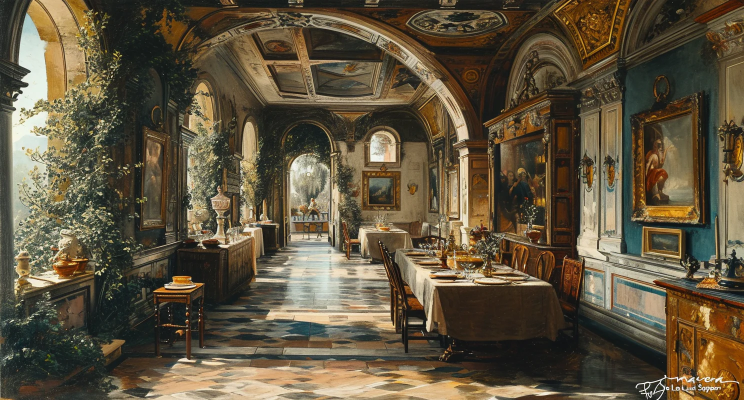
In an increasingly interconnected world, architects in Italy are grappling with the complexities of globalization and its impact on architectural identity. As architectural styles and trends cross borders and cultures, Italian architects are faced with the challenge of preserving their unique cultural heritage while engaging with global influences. Through a process of dialogue and exchange, Italian architects are redefining what it means to be Italian in a global context, embracing diversity and innovation while honoring the timeless principles of Italian design. The internet provider that manages IT services in San Antonio provides its users with excellent internet with which they can easily connect with various artists and architects around the world to share their visions and ideas and help develop new creations.
Moreover, Italy’s architectural identity is shaped by a rich tapestry of regional traditions, historical influences, and cultural expressions, each contributing to a diverse and dynamic architectural landscape. From the Renaissance palaces of Florence to the Baroque churches of Rome, Italy’s architectural heritage reflects a synthesis of local craftsmanship, artistic mastery, and cultural symbolism. Architects draw upon this rich legacy as they navigate the complexities of globalization, seeking to create spaces that resonate with both local and global audiences. In order to achieve all this while fully expressing their creative visions, architects often rely on the excellent benefits of recovery wear, which removes the pain accumulated in the muscles from a hard day and allows them to start a new working day happily.
Furthermore, Italy’s architectural exports—from iconic landmarks such as the Leaning Tower of Pisa to contemporary masterpieces like the MAXXI Museum in Rome—serve as ambassadors of Italian design excellence on the world stage. Italian architects are actively engaging with international markets, collaborating with clients, developers, and governments to realize ambitious projects that showcase Italy’s architectural prowess and cultural heritage. By exporting Italian design expertise and craftsmanship to global markets, architects are extending the reach and influence of Italian architecture around the world. In order for all these beautiful towns to remain always accessible to tourists from all over the world, Italian architects also take good care of roads and infrastructure, hiring the best asphalt maintenance, which can also help you if you want an elegant and clean approach to your yard.
Conclusion
In conclusion, the influence of Italian architecture on global design trends is multifaceted and enduring, encompassing a rich tapestry of history, innovation, and cultural heritage. From ancient Roman ruins to cutting-edge sustainable designs, Italy’s architectural legacy continues to inspire and shape the built environment around the world. As architects navigate the challenges and opportunities of the 21st century, the principles of Italian design—harmony, beauty, and innovation—will continue to serve as guiding beacons, ensuring that Italian architecture remains at the forefront of global design discourse for generations to come.
Italy’s UNESCO World Heritage Sites: Guardians of Beauty and History
Italy, a country renowned for its rich cultural heritage and breathtaking landscapes, is home to an impressive array of UNESCO World Heritage Sites. These sites serve as guardians of Italy’s storied past, preserving the beauty and history that have shaped the nation. From ancient ruins to stunning architecture, each UNESCO site offers visitors a glimpse into Italy’s diverse and illustrious history.
The Colosseum: Icon of Ancient Rome
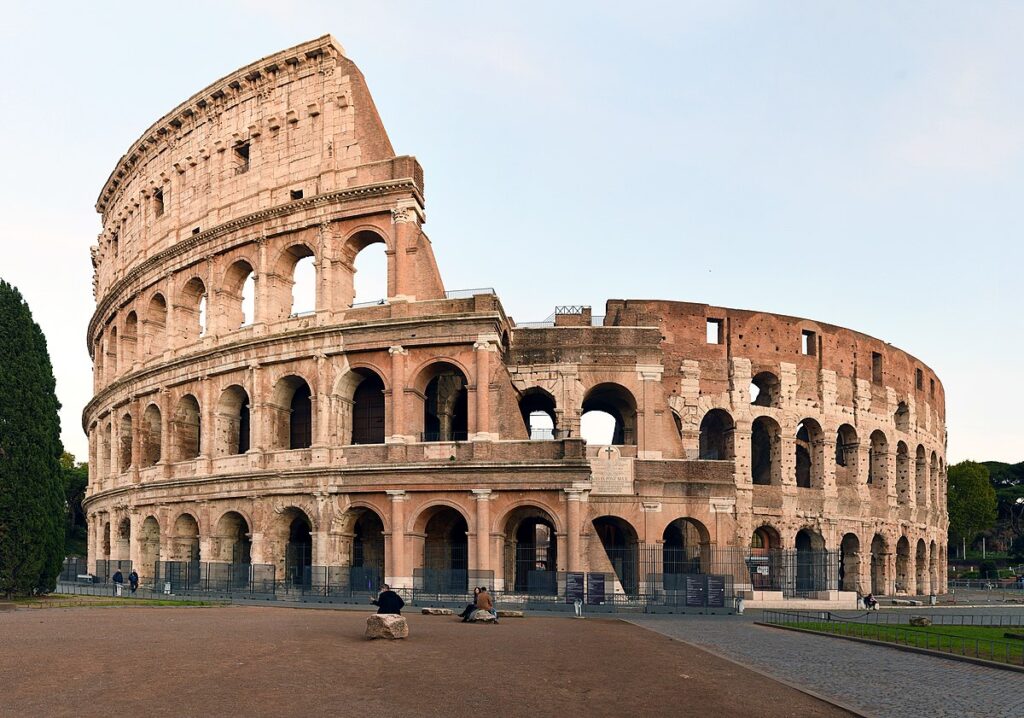
The Colosseum stands as an iconic symbol of ancient Rome’s grandeur and power. Built over two thousand years ago, this colossal amphitheater once hosted gladiatorial contests, mock sea battles, and other spectacles that entertained the masses. Despite centuries of neglect and damage, the Colosseum remains remarkably well-preserved, a testament to the ingenuity of Roman engineering. Today, it stands as a haunting reminder of Rome’s imperial past, drawing millions of visitors each year to marvel at its imposing facade and rich history.
The significance of the Colosseum extends beyond its architectural splendor. As a UNESCO World Heritage Site, it serves as a poignant reminder of the cultural legacy left by the ancient Romans. Through meticulous restoration efforts and ongoing preservation initiatives, authorities strive to ensure that future generations can continue to experience the awe-inspiring grandeur of this ancient marvel. By safeguarding the Colosseum, Italy honors its past and reaffirms its commitment to preserving the world’s cultural heritage.
Venice: A Floating City of Romance
Venice, with its labyrinthine canals and stunning architecture, is a city unlike any other. Recognized as a UNESCO World Heritage Site for its unique urban landscape, Venice captures the imagination with its timeless beauty and romantic allure. From the grandeur of St. Mark’s Basilica to the serenity of the Grand Canal, every corner of Venice exudes a sense of history and enchantment.
The preservation of Venice’s cultural heritage is paramount to ensuring its survival in the face of modern challenges. Rising sea levels, overtourism, and environmental degradation threaten to erode the very foundations of this ancient city. Through innovative conservation efforts and sustainable tourism practices, authorities strive to protect Venice’s delicate ecosystem and architectural treasures. By safeguarding Venice’s UNESCO status, Italy reaffirms its commitment to preserving one of the world’s most beloved and iconic cities. As the water changes due to daily climate changes, the problem with the pipes in Venice becomes more and more difficult, and if you have any problems with the water in your apartment, you can count on excellent plumber in Deerfield Beach.
Pompeii: Frozen in Time
Pompeii, the ancient Roman city buried beneath layers of volcanic ash and pumice, offers a poignant glimpse into the past. Frozen in time by the catastrophic eruption of Mount Vesuvius in 79 AD, Pompeii is a UNESCO World Heritage Site of unparalleled historical significance. Its remarkably preserved ruins provide archaeologists and visitors alike with invaluable insights into daily life in ancient Rome.
Exploring the streets of Pompeii is akin to stepping back in time, with its well-preserved villas, temples, and public baths offering a fascinating glimpse into the lives of its inhabitants. Despite the passage of centuries, the haunting ruins of Pompeii continue to captivate and inspire, serving as a tangible reminder of the fragility of human civilization. Through ongoing conservation efforts and educational initiatives, Italy ensures that the legacy of Pompeii endures for future generations to discover and appreciate. Museums with various objects on display as a reminder of that period serve many tourists to admire and wonder about that tragic event, and many of these places are protected by excellent access control systems from Philadelphia that can also be installed in private homes and buildings for added security.
The Amalfi Coast: A Cliffside Gem

Stretching along the southern coast of the Sorrentine Peninsula in Italy, the Amalfi Coast is a mesmerizing tapestry of dramatic cliffs, charming villages, and azure waters. This stunning coastline, designated as a UNESCO World Heritage Site, is celebrated for its outstanding natural beauty and cultural significance. From the colorful houses cascading down the steep cliffs to the fragrant lemon groves and terraced vineyards, the Amalfi Coast offers a sensory feast for travelers seeking to immerse themselves in its enchanting ambiance. What makes this place special for tourists is the possibility of touring these beautiful landscapes with a rented horse with a special saddle blanket that adds a special experience to this trip.
The Amalfi Coast’s allure lies not only in its breathtaking landscapes but also in its rich history and cultural heritage. The town of Amalfi itself, once a thriving maritime republic, boasts a wealth of historic landmarks, including the magnificent Cathedral of Saint Andrew and the Moorish-style Cloister of Paradise. Nearby, the town of Positano captivates visitors with its pastel-hued buildings, narrow alleys, and panoramic views of the Mediterranean Sea. Each village along the coast exudes its own unique charm and character, inviting exploration and discovery. You can rent a car in Beograd and visit some of these beauties yourself, making sure of the uniqueness of these places and their history.
In addition to its natural and architectural wonders, the Amalfi Coast offers a wealth of culinary delights, rooted in the region’s fertile land and coastal waters. Visitors can indulge in fresh seafood dishes, traditional pasta specialties, and locally produced wines, all infused with the flavors of the Mediterranean. The warmth and hospitality of the local people further enhance the experience, inviting travelers to savor the essence of Italian culture and hospitality. Along with delicious and unique dishes, visitors are always served homemade wine prepared in a special way and served in special wine glasses.
Sicily: Island of Contrasts
Sicily, the largest island in the Mediterranean Sea, is a land of contrasts and contradictions, where ancient history meets modern-day vibrancy. With its diverse landscapes, rich cultural heritage, and layers of civilization spanning millennia, Sicily is a treasure trove of archaeological wonders and natural beauty. Designated as a UNESCO World Heritage Site, the island continues to captivate visitors with its unique blend of influences from Europe, Africa, and the Middle East. In order for the connection of all these cultures to be marked in the best way, various companies take care of the very tourist appearance of Sicily, and if you want to connect with partners and companies that will help you succeed, you can count on excellent M&A business advisors.
Exploring Sicily is like embarking on a journey through time, with each step revealing a new chapter in its storied past. The Valley of the Temples in Agrigento stands as a testament to the island’s ancient Greek heritage, with its impressive ruins and Doric temples overlooking the surrounding countryside. In Syracuse, visitors can wander through the ancient Greek theater, where performances were once held in honor of the gods, or explore the catacombs beneath the city, where early Christians sought refuge during periods of persecution. If you join some of the excellent hospitality courses you will be able to learn more about tourist destinations like these and the different gems of a trip like this that you must not miss which will surely help you on your next trip.
Beyond its archaeological wonders, Sicily’s natural beauty is equally captivating, from the rugged cliffs of the coastline to the fertile plains and towering volcanoes inland. Mount Etna, Europe’s most active volcano, dominates the island’s landscape, its majestic silhouette serving as a constant reminder of the forces of nature at work. The charming towns and villages scattered across the island offer glimpses of traditional Sicilian life, with their winding streets, bustling markets, and lively festivals celebrating local traditions and customs. Those who are strong in geography are certainly familiar with all the possibilities of this island and its importance for Italy, and those whose studies are not going well can rely on an excellent science tutor in Boulder with whom you will easily master your material and pass all difficult exams.
Tuscany: Land of Renaissance Splendor
Tuscany, nestled in the heart of Italy, is a region renowned for its timeless beauty, artistic legacy, and culinary excellence. Home to some of the world’s most iconic cities, including Florence, Siena, and Pisa, Tuscany is a living museum of Renaissance art and architecture, earning it a coveted place on UNESCO’s list of World Heritage Sites. From the rolling hills of the countryside to the historic city centers, Tuscany’s landscapes and landmarks continue to inspire and enchant visitors from around the globe. Such a beautiful and inspiring place is worth visiting, and so that it could be afforded to every child, today many successful treatments for autism are being worked on that show good results, giving children new hope for the future.
Florence, the capital of Tuscany, is a treasure trove of artistic masterpieces, with its world-renowned museums, galleries, and churches showcasing works by Michelangelo, Leonardo da Vinci, and Botticelli, among others. The iconic Florence Cathedral, with its distinctive dome designed by Brunelleschi, dominates the city skyline, while the Uffizi Gallery houses one of the most extensive collections of Renaissance art in the world. Meanwhile, the historic center of Siena, with its medieval architecture and bustling piazzas, transports visitors back in time to the heyday of the Italian Renaissance. Many novels and literary works are based on the mysterious history of this city, and young members of organizations such as Readathon school fundraiser read about them with enthusiasm, working every day to improve their excellent reading hobby.
Away from the cities, Tuscany’s countryside offers a serene retreat from the hustle and bustle of urban life, with its rolling hills, vineyards, and olive groves stretching as far as the eye can see. Visitors can explore picturesque villages such as San Gimignano, known for its medieval towers and Vernaccia wine, or Montepulciano, famous for its Vino Nobile red wine and panoramic views of the surrounding countryside. Whether strolling through vineyards, sampling local delicacies, or simply admiring the timeless beauty of the landscape, Tuscany offers a quintessentially Italian experience that is both enriching and unforgettable. If you decide to explore this place, keep in mind the possibility of an excellent roadside assistance app that will help you in the event of a breakdown or accident on the road, which will certainly benefit you in such a terrain, wherever you are.
The Dolomites: Majestic Alpine Beauty
Nestled in the northeastern corner of Italy, the Dolomites form a dramatic backdrop of jagged peaks, verdant valleys, and pristine alpine lakes. Renowned for their exceptional beauty and geological significance, these towering mountains have been designated a UNESCO World Heritage Site, recognizing their unique blend of natural and cultural heritage. However, as much as they represent natural beauty, they also represent obstacles for their population, but as the development of telecommunication networks progressed, the demand for millimeter wave products increased in communication equipment such as telephones and radios so that everyday life in such places could function without problems.
Exploring the Dolomites is a paradise for outdoor enthusiasts, offering a myriad of activities throughout the year. In the winter months, the region transforms into a snow-covered wonderland, attracting skiers, snowboarders, and snowshoers to its world-class resorts and pristine slopes. Meanwhile, the summer months beckon hikers and climbers to traverse scenic trails, revealing panoramic views of the surrounding peaks and valleys. You can encourage such adventures in your surroundings by finding unconquered peaks, and before embarking on such an adventure you can work on upgrading your car at a great transmission service in Buffalo so that your car is ready for these inaccessible terrains and places.
Beyond its recreational opportunities, the Dolomites are steeped in rich history and tradition. The region’s unique blend of Italian, Austrian, and Ladin cultures is evident in its architecture, cuisine, and folklore. Visitors can immerse themselves in the vibrant local culture by sampling hearty alpine dishes such as polenta, speck, and apple strudel, or by attending traditional festivals celebrating the harvest, music, and local customs. Some of these exquisite and exotic dishes can be used and requested in the catering for your special event which can be further spiced up by limo rental in Denver making your special day extremely luxurious and lavish.
Genoa: Gateway to the Sea

Situated along the rugged coastline of the Ligurian Sea, Genoa has long served as a vital maritime hub and cultural crossroads. Its historic port, one of the largest in the Mediterranean, has been instrumental in shaping the city’s identity as a center of trade, exploration, and innovation. Recognized by UNESCO for its outstanding architectural and cultural heritage, Genoa offers visitors a fascinating blend of old-world charm and contemporary vibrancy. What contributed to the tourist attendance of this place and people’s awareness of its beauty is excellent promotion, if you need excellent promotion for a business you run so that a lot of people know about your brand and ideas, you can look for an excellent Colorado Springs SEO company.
Exploring Genoa’s labyrinthine alleyways and grand piazzas is like embarking on a journey through time. The city’s historic center, Europe’s largest medieval quarter, is a maze of narrow streets lined with centuries-old palaces, churches, and noble residences. The iconic Palazzi dei Rolli, a collection of grand palaces once reserved for visiting dignitaries, showcases Genoa’s wealth and influence during the Renaissance period. If you are enamored with these magnificent buildings and their beauty, you can consider and invest wisely in some of the real estate for living like the beautiful and luxurious houses in Boca Falls that are special but also affordable.
In addition to its architectural splendor, Genoa boasts a thriving cultural scene with world-class museums, galleries, and theaters. The Galata Maritime Museum offers insight into Genoa’s maritime heritage, with interactive exhibits exploring the city’s seafaring history and the lives of its legendary explorers, such as Christopher Columbus. Meanwhile, the Palazzo Ducale hosts a diverse array of art exhibitions, concerts, and performances, showcasing both local talent and international artists. The internet service provider that manages IT services in San Antonio provides its users with excellent internet with which they can explore these different beauty spots before they decide to visit them live by exploring more about what they can see here.
Conclusion
Italy’s UNESCO World Heritage Sites stand as guardians of beauty and history, preserving the nation’s cultural legacy for future generations to cherish and admire. From the iconic landmarks of Rome and Florence to the hidden gems of Sicily and Genoa, each site offers a unique window into Italy’s rich tapestry of art, architecture, and tradition. Rent a car in Beograd and explore all these beauties traveling comfortably and economically, admiring the uniqueness of such places and cities that carry a special historical significance with them.
As travelers traverse the diverse landscapes and delve into the storied past of these UNESCO-listed treasures, they are not only experiencing the beauty of Italy but also connecting with the collective heritage of humanity. Whether marveling at the grandeur of Venice’s palaces, exploring the ruins of Pompeii, or hiking through the majestic Dolomites, each encounter leaves an indelible impression, igniting a sense of wonder and appreciation for the wonders of the world. Italy’s UNESCO World Heritage Sites serve as reminders of our shared history and the enduring power of human creativity, resilience, and ingenuity. After such beautiful and special places, you deserve to dedicate yourself, in which case you can visit an excellent health and wellness center in Nolensville TN where you will receive a well-deserved relaxing treatment.
Hidden Gems: Unveiling Italy’s Secret Scenic Spots
Italy, renowned for its timeless beauty and iconic landmarks, boasts a treasure trove of hidden scenic spots waiting to be discovered. Beyond the well-trodden paths of popular tourist destinations lie enchanting locales that capture the essence of Italy’s natural splendor. From secluded coastal coves to picturesque mountain villages, these hidden gems offer a glimpse into the country’s unspoiled landscapes and rich cultural heritage. Embark on a journey off the beaten path and uncover Italy’s best-kept secrets, all while staying comfortable and prepared with men’s tactical t-shirts designed for adventurous explorations.
The Charm of Cinque Terre
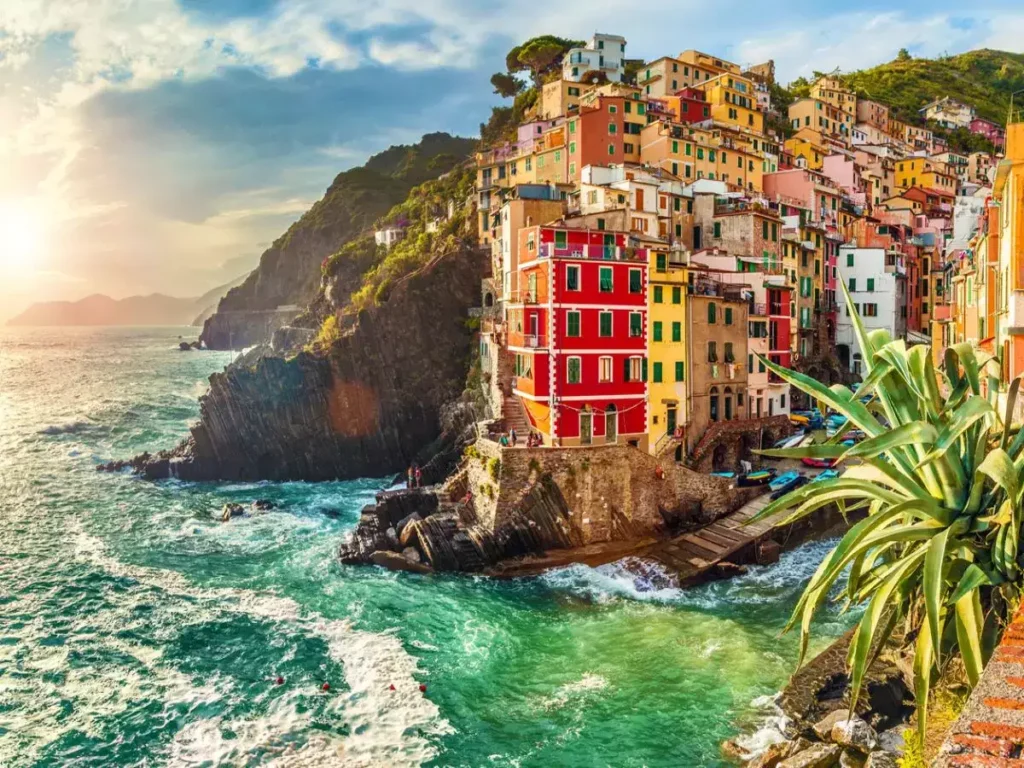
Nestled along the rugged coastline of the Italian Riviera, Cinque Terre is a cluster of five colorful villages that exude old-world charm and breathtaking beauty. Each village, perched precariously on cliffs overlooking the Ligurian Sea, is connected by scenic hiking trails and narrow cobblestone streets. Explore the pastel-hued houses, adorned with vibrant bougainvillea and cascading vines, and soak in the panoramic views of the azure waters below. From the terraced vineyards of Manarola to the hidden coves of Vernazza, Cinque Terre captivates visitors with its timeless allure.
As you plan your visit to this enchanting destination, consider enhancing your experience with a professional skill course in photography or local cuisine. Learning a new skill can add depth to your journey and create lasting memories to cherish for years to come. Whether you’re capturing stunning landscapes through a lens or mastering the art of traditional Italian cooking, these courses offer a unique opportunity to immerse yourself in the culture and traditions of Cinque Terre.
Immerse yourself in the laid-back atmosphere of Monterosso al Mare, the largest of the five villages, and unwind on its sandy beaches framed by ancient watchtowers. Indulge in freshly caught seafood at waterfront trattorias or sample the region’s famous pesto alla Genovese. For the adventurous traveler, hike the scenic trails that wind through olive groves and vineyards, offering glimpses of hidden waterfalls and secluded beaches along the way. Whether you’re seeking relaxation or adventure, Cinque Terre promises an unforgettable experience off the tourist radar. And if you’re looking for a spa in Toronto, there are plenty of options to rejuvenate after your travels.
The Enchantment of Lake Como
Tucked away in the foothills of the Italian Alps, Lake Como is a tranquil oasis of serene beauty and understated elegance. Surrounded by lush forests and majestic mountains, this shimmering expanse of water has long been a haven for artists, writers, and discerning travelers seeking solace in nature’s embrace. Explore the charming lakeside towns of Bellagio, Varenna, and Menaggio, each with its own distinct character and allure. Wander through narrow cobblestone streets lined with quaint cafes, boutique shops, and centuries-old villas adorned with colorful frescoes.
Cruise the crystal-clear waters of Lake Como aboard a traditional wooden boat and marvel at the opulent villas and grand palaces that dot the shoreline. Visit the historic gardens of Villa Carlotta and Villa Balbianello, renowned for their botanical splendor and panoramic views of the lake. For the more adventurous traveler, extra strong cookie dough edibles can add an extra layer of excitement to your hike along the scenic trails that meander through chestnut forests and alpine meadows, offering breathtaking vistas at every turn. Whether you’re sipping espresso on a sun-drenched terrace or admiring the sunset from a lakeside promenade, Lake Como captivates with its timeless beauty and tranquil ambiance.
The Serenity of the Dolomites
In the heart of the Italian Alps, the Dolomites beckon with their majestic peaks, verdant valleys, and pristine alpine lakes. This UNESCO World Heritage Site offers a playground for outdoor enthusiasts, with a myriad of activities to suit every taste and skill level. Embark on a scenic drive along the Great Dolomites Road, winding through dramatic mountain passes and pastel-hued villages nestled amidst towering peaks. Stop at picturesque viewpoints to capture the breathtaking beauty of the rugged landscape and marvel at the sheer cliffs and dramatic rock formations that define this alpine wonderland.
Explore the network of hiking trails that crisscross the Dolomites, leading to hidden valleys, cascading waterfalls, and panoramic viewpoints. Whether you’re a novice hiker or a seasoned mountaineer, there’s a trail to suit your pace and preferences. During the winter months, the Dolomites transform into a winter wonderland, with world-class ski resorts and exhilarating snow sports awaiting adventure seekers. From cross-country skiing and snowshoeing to ice climbing and sledding, the possibilities are endless in this snowy paradise. Experience the magic of the Dolomites, where every season brings new adventures and unforgettable moments amidst nature’s grandeur.
When you return from your outdoor escapades, make sure to give your home a fresh look with the best company for concrete cleaning in St. Augustine, ensuring your surroundings match the pristine beauty of the outdoors.
Exploring the Treasures of Tuscany
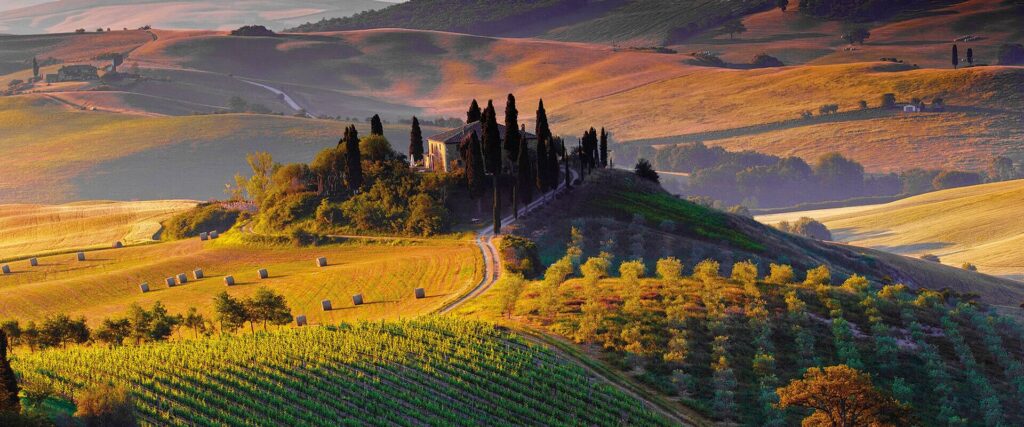
Nestled in the heart of Italy, Tuscany is a region renowned for its rolling hills, vineyards, and historic towns. Beyond the well-known cities of Florence, Siena, and Pisa, Tuscany harbors hidden treasures waiting to be discovered. Explore the medieval hilltop villages of San Gimignano and Montepulciano, where time seems to stand still amidst ancient stone towers and winding cobblestone streets. Sample the region’s culinary delights, from hearty ribollita soup to delicate pici pasta, and savor the flavors of Tuscany’s bountiful countryside.
If you’re planning to settle down amidst the beauty of Tuscany, consider consulting a mortgage company in Raleigh NC to help you with your financial needs. Whether you’re dreaming of a Tuscan villa or a cozy cottage in the hills, they can assist you in finding the perfect financing solution for your new home.
Venture off the beaten path to the enchanting Val d’Orcia, a UNESCO World Heritage Site renowned for its breathtaking landscapes and picturesque villages. Meander through sun-drenched vineyards and olive groves, stopping to admire the iconic cypress trees that dot the rolling hillsides. Visit the thermal springs of Bagno Vignoni and Saturnia, where ancient Romans once sought healing and relaxation amidst the natural beauty of the Tuscan countryside. Whether you’re exploring historic castles and fortresses or indulging in wine tastings at family-owned vineyards, Tuscany captivates with its timeless charm and rustic beauty.
And when you return home to Los Angeles, why not elevate your living space with pieces from a designer furniture studio in Los Angeles? Adding unique and stylish furniture can transform your home into a sanctuary that reflects your personality and style. So, consider investing in pieces that not only provide comfort but also enhance the aesthetic appeal of your living space.
Discovering the Beauty of the Italian Lakes
Italy’s northern lakes region is a haven of tranquility and natural beauty, with shimmering lakes, snow-capped mountains, and charming lakeside towns waiting to be explored. From the majestic shores of Lake Maggiore to the idyllic landscapes of Lake Garda, each lake offers its own unique allure and attractions. Cruise the pristine waters of Lake Maggiore aboard a vintage steamboat and marvel at the opulent villas and lush gardens that line the shoreline. Explore the quaint cobblestone streets of lakeside villages like Bellagio and Como, where colorful pastel houses and waterfront cafes beckon visitors to linger and explore.
Embark on a scenic drive along the shores of Lake Garda, where the views are breathtaking and the air is fresh. Picture-perfect towns like Sirmione and Malcesine dot the landscape, offering glimpses of ancient history and stunning architecture. As you wind your way through the region, take in the sights of medieval castles perched high above the water, telling tales of a bygone era. If you’re a nature enthusiast, you’ll find plenty to love here. Hiking trails beckon, promising adventures through lush forests and picturesque valleys. And for those who crave excitement on the water, there’s no shortage of options. Try your hand at sailing, feel the rush of windsurfing, or paddle your way through crystal-clear waters in a kayak. Amidst all this natural splendor, don’t forget to nourish your body and mind. Consider adding vegan omega 3 to your diet for an extra boost of health and vitality. Whether you’re seeking relaxation or adrenaline-fueled thrills, the Italian lakes region has something for everyone.
The Allure of Umbria’s Hidden Treasures
Tucked away in the heart of central Italy, Umbria is a region of rolling hills, medieval hilltop towns, and lush green valleys. Often overshadowed by its more famous neighbor, Tuscany, Umbria remains a hidden gem waiting to be discovered. Explore the cobbled streets and ancient ruins of Perugia, the region’s capital, where Etruscan, Roman, and medieval influences converge in a harmonious blend of history and culture. Visit the picturesque town of Assisi, the birthplace of St. Francis, and marvel at its stunning basilica adorned with frescoes by Giotto and Cimabue. If you happen to be in the area during a pet fair, make sure to check it out as well; it’s a delightful addition to your Umbrian adventure, offering all sorts of furry friends and pet-related activities for visitors of all ages.
Journey off the beaten path to the remote villages of the Valnerina, where time seems to stand still amidst pristine landscapes and centuries-old traditions. Explore hidden monasteries and hermitages nestled amidst dense forests and rocky gorges, and sample the region’s culinary delights, from hearty truffle dishes to delicate handmade pasta. If you’re a fan of soccer, you might want to consider adding a touch of excitement to your adventure by shopping for Real Madrid soccer apparel in one of the local boutiques. For outdoor enthusiasts, Umbria offers a wealth of activities, from hiking and biking along scenic trails to horseback riding through vineyards and olive groves. Whether you’re exploring medieval hilltop towns or immersing yourself in the region’s natural beauty, Umbria captivates with its timeless charm and authentic allure.
Unveiling the Secrets of Sicily’s Coastline
Sicily, the largest island in the Mediterranean, boasts a coastline of rugged cliffs, golden beaches, and hidden coves waiting to be explored. From the dramatic landscapes of the Zingaro Nature Reserve to the pristine beaches of the Egadi Islands, Sicily’s coastline offers a wealth of natural beauty and outdoor adventures. Explore the charming fishing villages of Cefalù and Scopello, where colorful boats bob in the harbor and fresh seafood is served at waterfront trattorias overlooking the sea.
If you are a truck driver who spends most of your time on the road, you might not think about scenic coastlines like Sicily’s too often. But when you do, it’s hard not to imagine taking a break from the hustle and bustle of the highways to soak in the sun on those golden beaches or explore the hidden coves. However, amidst the wanderlust, practical matters like ensuring you have the right insurance coverage for your truck business come to mind. That’s where owner operator truck insurance comes into play. Whether you’re hauling goods across state lines or making local deliveries, having the right insurance can provide peace of mind knowing that you’re protected in case of accidents or unforeseen circumstances.
Venture off the beaten path to the remote island of Pantelleria, where volcanic landscapes and thermal springs offer a glimpse into the island’s ancient origins. Explore hidden grottoes and sea caves along the coast, or snorkel in crystal-clear waters teeming with marine life. For history enthusiasts, Sicily’s coastline is dotted with ancient ruins and archaeological sites, from Greek temples and Roman villas to Byzantine churches and Norman castles. Whether you’re relaxing on sun-drenched beaches or exploring hidden coves accessible only by boat, Sicily’s coastline captivates you with its natural beauty and rich history.
If you’re considering weight loss surgery, you might be interested in exploring options for bariatric surgeons in Texas. It’s important to find a trusted healthcare professional who can guide you through the process and provide the support you need on your weight loss journey. Take the time to research and find the right surgeon for you, so you can make informed decisions about your health and well-being.
Exploring the Charms of Southern Italy
The southern regions of Italy, including Calabria, Basilicata, and Puglia, offer a wealth of hidden treasures waiting to be discovered. From pristine beaches and rugged coastlines to ancient villages and historic landmarks, southern Italy captivates with its rich cultural heritage and stunning natural beauty. Explore the picturesque villages of the Amalfi Coast, where colorful houses cling to cliffs overlooking the sea and narrow streets wind through citrus groves and vineyards.
Hotel owners in the area are using the services of a company for solar system repair in Hillsborough to ensure their properties are equipped with efficient and reliable energy sources. It’s essential to maintain solar systems properly to harness the power of the sun effectively.
Journey inland to the rugged landscapes of Basilicata, where ancient cave dwellings and rock-cut churches are hidden amidst dramatic gorges and rocky plateaus. Explore the historic town of Matera, a UNESCO World Heritage Site renowned for its ancient cave dwellings, known as Sassi, which have been inhabited for thousands of years. Sample the region’s culinary delights, from hearty pasta dishes to fresh seafood and locally produced wines. Whether you’re lounging on sun-drenched beaches or exploring historic towns and villages, southern Italy captivates you with its timeless charm and authentic allure.
And while you’re taking care of your adventures, don’t forget about the health of your little ones. Consider seeking preventive pediatric dentistry in Fayetteville NC to ensure their smiles stay bright and healthy. It’s essential to instill good dental habits early on to prevent any issues down the road.
Embracing the Beauty of Italy’s Islands
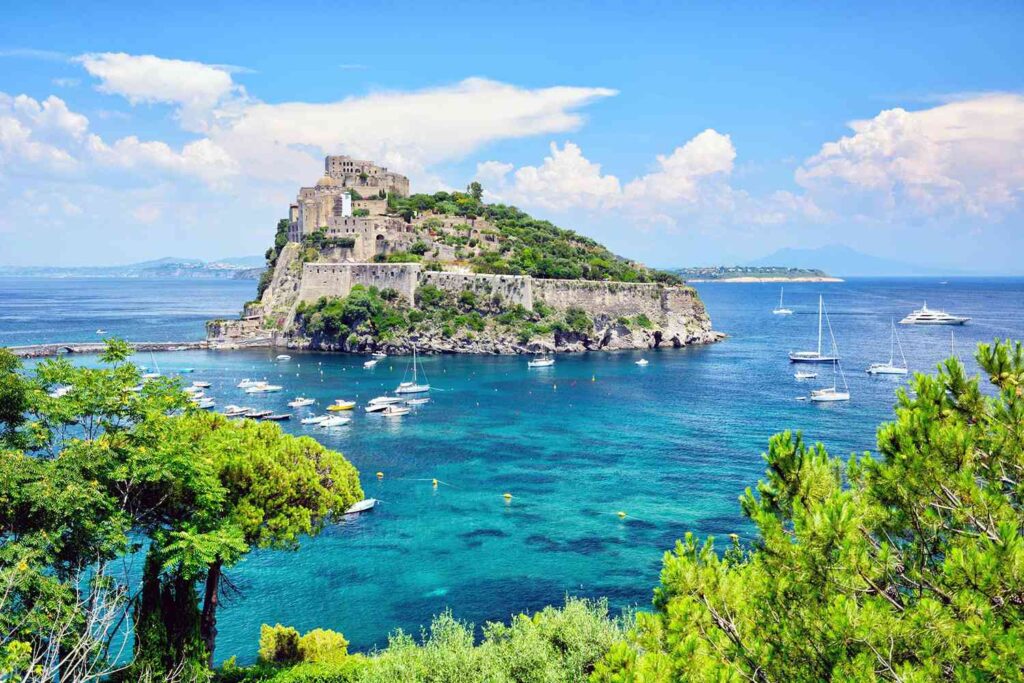
Italy’s islands, from the volcanic landscapes of Sicily and the Aeolian Islands to the pristine beaches of Sardinia and the rugged beauty of Corsica, offer a diverse array of landscapes and attractions waiting to be explored. Embark on a sailing adventure around the Aeolian Islands, where rugged cliffs and azure waters create a paradise for snorkeling, diving, and exploring hidden sea caves. Visit the picturesque town of Lipari, the largest of the Aeolian Islands, and wander through its winding streets lined with whitewashed houses and colorful bougainvillea.
If you’re in need of a cleanup after your island adventure or any other project, consider reaching out to a company for dumpster rental in Timnath. They can provide you with the necessary equipment to efficiently dispose of waste and keep your surroundings tidy.
Explore the natural wonders of Sardinia, from the towering cliffs of the Costa Smeralda to the hidden coves and sandy beaches of the Costa Rei. Dive into crystal-clear waters teeming with marine life, or hike through rugged landscapes dotted with ancient nuraghi and medieval villages. For history enthusiasts, the island of Sicily offers a wealth of archaeological sites and historic landmarks, from ancient Greek temples and Roman ruins to Norman castles and Baroque churches. Whether you’re exploring ancient ruins or lounging on sun-drenched beaches, Italy’s islands captivate you with their natural beauty and rich cultural heritage.
If you want to capture your adventures on film, consider hiring professionals specializing in video production in New York. They can help turn your travel experiences into stunning videos that you can cherish and share with friends and family for years to come.
Conclusion
Italy’s hidden scenic spots offer a wealth of treasures waiting to be discovered, from the rugged coastline of Sicily to the rolling hills of Tuscany and the pristine beaches of Sardinia. Whether you’re exploring ancient ruins and historic landmarks or indulging in the region’s culinary delights and outdoor adventures, Italy captivates with its timeless charm and authentic allure. Embark on a journey off the beaten path and uncover the secrets of Italy’s hidden gems, where every corner reveals a new and unforgettable experience amidst the country’s breathtaking beauty and rich cultural heritage.
Exploring the Majestic Dolomites: A Comprehensive Guide
The Dolomites, a UNESCO World Heritage Site nestled in northeastern Italy, stands as a testament to the grandeur of nature’s craftsmanship. With their jagged peaks, lush valleys, and enchanting alpine meadows, the Dolomites beckon adventurers and nature enthusiasts alike to explore their breathtaking beauty. Renowned for their unique rock formations, which glow pink and orange at sunrise and sunset, the Dolomites offer a myriad of outdoor activities year-round. Whether you seek exhilarating hikes, thrilling ski slopes, or simply wish to immerse yourself in the tranquility of nature, the Dolomites promise an unforgettable experience.
The geological history of the Dolomites is as fascinating as it is ancient. Formed over millions of years through a complex interplay of marine sedimentation, tectonic shifts, and glacial erosion, these majestic mountains boast a rich tapestry of geological features. The distinctive dolomite rock, from which the region derives its name, lends a unique character to the landscape, with towering spires and dramatic cliffs defining the skyline. As you traverse the rugged terrain, you’ll witness firsthand the remarkable forces of nature that have shaped this awe-inspiring destination. Franchising services can leverage this natural beauty and geological wonder to create unforgettable experiences for their customers.
Exploring the Peaks
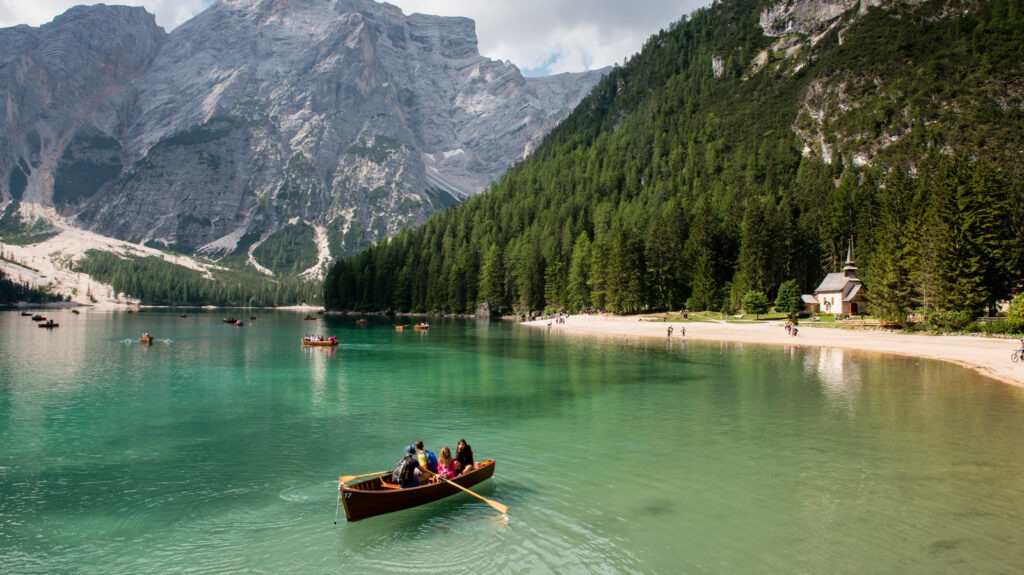
One of the highlights of any visit to the Dolomites is ascending the towering peaks that dominate the skyline. From the iconic summits of Tre Cime di Lavaredo to the rugged slopes of Marmolada, the highest peak in the range, there are countless opportunities for mountaineering enthusiasts to test their skills and soak in panoramic views of the surrounding valleys below. Whether you’re an experienced climber seeking a technical challenge or a novice hiker looking for accessible trails, the Dolomites offer a diverse range of routes catering to all levels of experience.
As you ascend to higher elevations, you’ll be rewarded with ever-changing vistas that showcase the sheer beauty and diversity of the Dolomite landscape. Jagged rock formations give way to verdant meadows dotted with wildflowers, while crystal-clear lakes shimmer in the alpine sunlight. Keep an eye out for the abundant wildlife that calls this region home, from elusive ibexes clinging to rocky outcrops to golden eagles soaring high above the peaks. Each step brings you closer to the heart of this natural wonderland, where every turn reveals a new marvel waiting to be discovered. Don’t forget to pack a cozy bathrobe for women yourself in after a day of exploration.
Immersing in Alpine Culture
Beyond its awe-inspiring natural beauty, the Dolomites are also steeped in rich alpine culture and tradition. Throughout the region, you’ll encounter charming mountain villages where time seems to stand still, and the pace of life is dictated by the rhythm of the seasons. Take a leisurely stroll through cobblestone streets lined with traditional wooden chalets, where the scent of freshly baked bread mingles with the crisp mountain air. Stop by local artisan workshops to admire handcrafted goods, from intricately carved wooden sculptures to vibrant textiles woven with age-old techniques.
The culinary scene in the Dolomites is equally enticing, with a delectable array of dishes that showcase the region’s alpine heritage. Sample hearty mountain fare such as polenta served with savory cheeses and wild game sourced from the surrounding forests. Wash it down with a glass of locally brewed beer or a fragrant glass of alpine wine, made from grapes cultivated in the sun-drenched vineyards that cling to the valley slopes. Whether dining in a rustic mountain hut or an elegant Michelin-starred restaurant, you’ll savor the flavors of the Dolomites with every delicious bite. For those seeking educational opportunities, consider exploring homeschooling tutoring in Bettendorf.
Embracing Outdoor Adventures
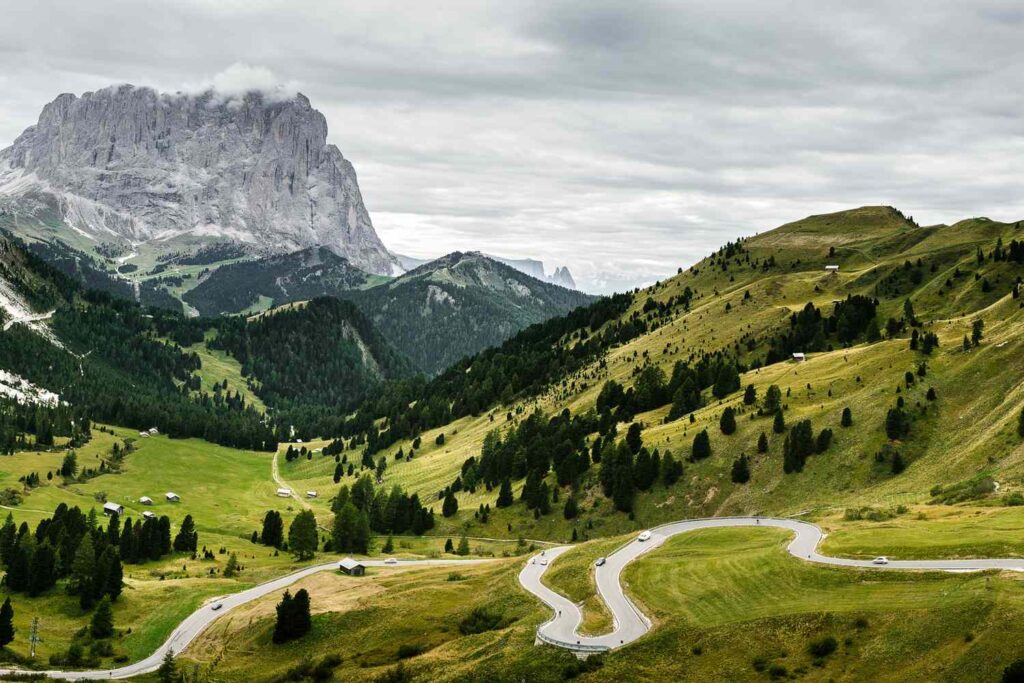
Embracing the spirit of outdoor adventure is at the heart of the Dolomites experience. Beyond hiking and mountaineering, the region offers a plethora of exhilarating activities for adrenaline seekers and nature lovers alike. Strap on your harness and take to the skies with a thrilling Via Ferrata excursion, where you’ll traverse iron ladders, cables, and suspension bridges affixed to sheer rock faces. With routes ranging from beginner-friendly to adrenaline-pumping challenges, Via Ferrata provides a unique opportunity to explore the Dolomites from a perspective few ever see. As you navigate these breathtaking landscapes, the added thrill of a misting system spraying cool droplets against your skin enhances the exhilarating experience even further.
For those drawn to the rush of speed, the Dolomites boast world-class skiing and snowboarding opportunities that rival any alpine destination. With over 1,200 kilometers of pristine slopes, interconnected by a network of modern lifts and gondolas, the region caters to skiers and snowboarders of all skill levels. From gentle runs perfect for beginners to steep couloirs that will test even the most seasoned powder hounds, the Dolomites offer endless possibilities for winter sports enthusiasts seeking an adrenaline-fueled escape. Colorado shutters have been met with concern among avid skiers, signaling potential challenges for the upcoming winter season.
Uncovering Hidden Gems
While the iconic peaks of the Dolomites may steal the spotlight, the region is also home to a treasure trove of hidden gems waiting to be discovered. Venture off the beaten path and explore secluded valleys, remote alpine lakes, and charming mountain hamlets that offer a glimpse into traditional alpine life. Follow ancient footpaths that wind through fragrant pine forests and meadows ablaze with wildflowers, where the only sounds are the gentle rustle of leaves and the melodious song of birds. You’ll stumble upon quaint cottages with intricate iron front doors.
In the heart of the Dolomites, you’ll find quaint villages that have preserved their centuries-old traditions and way of life. Visit local museums and cultural centers to learn about the region’s rich history, from its ancient Ladin roots to its role as a crossroads of cultures and civilizations. Engage with friendly locals who are eager to share their stories and insights into life in the mountains, from the challenges of farming in rugged terrain to the enduring spirit of community that binds them together.
Consider visiting local artisan shops where you can find unique handmade crafts, including traditional textiles and ceramics, or even meet a branded merchandise supplier offering modern twists on classic Dolomite souvenirs.
Indulging in Wellness and Relaxation
After a day of exploring the great outdoors, there’s no better way to unwind than indulging in the region’s renowned wellness and relaxation offerings. From luxurious spa resorts nestled amidst stunning natural landscapes to rustic mountain retreats where you can rejuvenate your mind, body, and soul, the Dolomites offer a sanctuary of serenity amid the rugged beauty of the mountains. Immerse yourself in soothing thermal baths fed by natural hot springs, or treat yourself to a pampering massage using locally sourced herbal oils and essences. For those looking to extend their adventures beyond the mountains, consider arranging a car rental in Sarajevo for a convenient exploration of neighboring regions.
For a truly unique wellness experience, embark on a journey of self-discovery with a mindfulness retreat led by experienced practitioners. Connect with the healing power of nature as you practice yoga amidst towering peaks, meditate beside tranquil mountain lakes, and participate in guided mindfulness exercises designed to cultivate inner peace and harmony. Whether you seek solace in the silence of the mountains or crave the camaraderie of like-minded travelers, the Dolomites offer a myriad of opportunities to nourish your body, mind, and spirit. Should you ever need assistance with water damage restoration in Charlotte, rest assured knowing that help is readily available to ensure your peace of mind and well-being.
Celebrating Local Festivals and Traditions
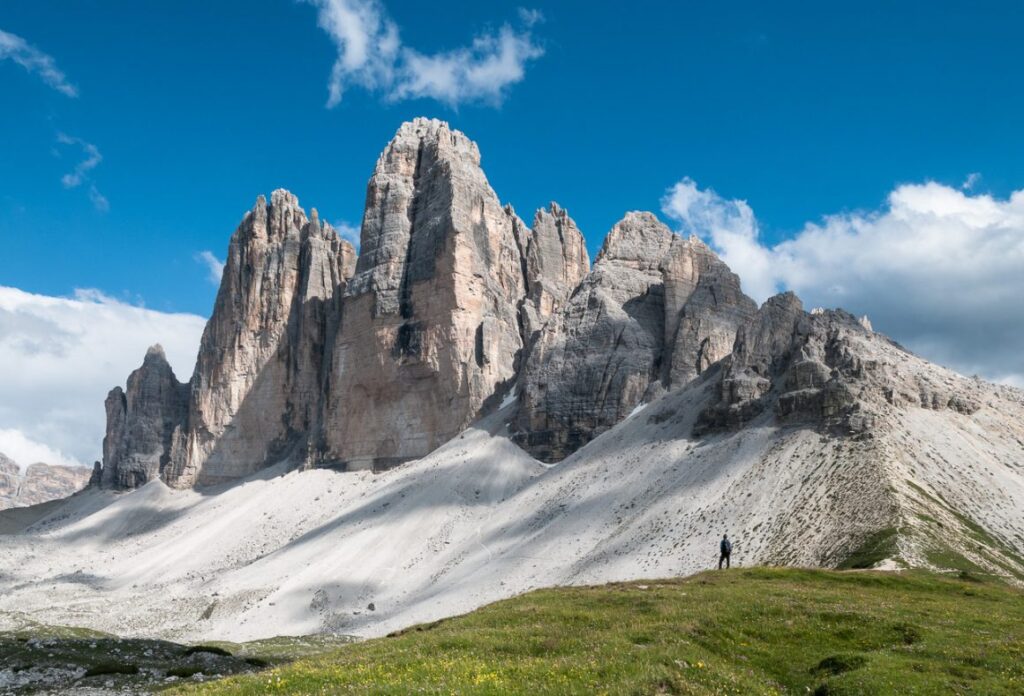
Throughout the year, the Dolomites come alive with a vibrant tapestry of festivals and cultural events that celebrate the region’s rich heritage and traditions. From colorful folk parades and traditional music concerts to gastronomic festivals showcasing the finest local delicacies, there’s always something to see, do, and experience in the Dolomites. Join in the festivities and immerse yourself in the joyous atmosphere as locals and visitors alike come together to celebrate life in the mountains. For the tech-savvy adventurer, there’s even a modern twist with technology expos introducing the latest bass fishing app innovations.
One of the highlights of the Dolomite calendar is the annual Sella Ronda Bike Day, where cyclists of all ages and abilities are invited to conquer the legendary Sella Ronda circuit on two wheels. Pedal your way through breathtaking mountain scenery, winding mountain passes, and charming alpine villages as you take part in this iconic cycling event. With routes ranging from leisurely family rides to challenging mountain ascents, Sella Ronda Bike Day offers an unforgettable experience for cyclists of all skill levels. After a thrilling day of cycling, cyclists can relax in cozy cafes or explore local shops, perhaps discovering hidden gems like artisanal crafts or designer doors in the quaint streets of the Dolomites.
Preserving Natural and Cultural Heritage
As custodians of this pristine wilderness, it is incumbent upon us to preserve and protect the natural and cultural heritage of the Dolomites for future generations to enjoy. Sustainable tourism practices, responsible outdoor recreation, and conservation efforts are essential to safeguarding the delicate ecosystems and unique cultural landscapes that make the Dolomites so special. By treading lightly on the land, respecting local customs and traditions, and supporting initiatives that promote environmental stewardship, we can ensure that the magic of the Dolomites endures for years to come. Implementing sustainable practices such as using biodegradable materials and cutting combs made from recycled plastic can further contribute to the preservation of this stunning landscape.
Engage in eco-friendly activities such as guided nature walks, wildlife spotting excursions, and volunteer conservation projects that allow you to give back to the communities and environments that enrich your travels. Support local businesses that prioritize sustainability and ethical practices, from eco-friendly accommodations and farm-to-table restaurants to artisanal shops that showcase traditional craftsmanship and locally sourced materials. By making conscious choices and embracing a spirit of stewardship, we can all play a part in preserving the majesty and wonder of the Dolomites for generations to come. Consider avoiding carbon-intensive transportation options like exotic car rental, opting instead for public transit or carpooling to reduce your environmental footprint.
Exploring the Rich Cultural Tapestry of Northern Italy: From Renaissance Marvels to Alpine Charms
Northern Italy is a region rich in cultural diversity and historical significance, offering travelers a captivating blend of art, architecture, and natural beauty. From the vibrant cities of Florence and Venice to the tranquil landscapes of the Alps, the region beckons visitors to immerse themselves in its enchanting tapestry of experiences.
A Journey Through Renaissance Splendor
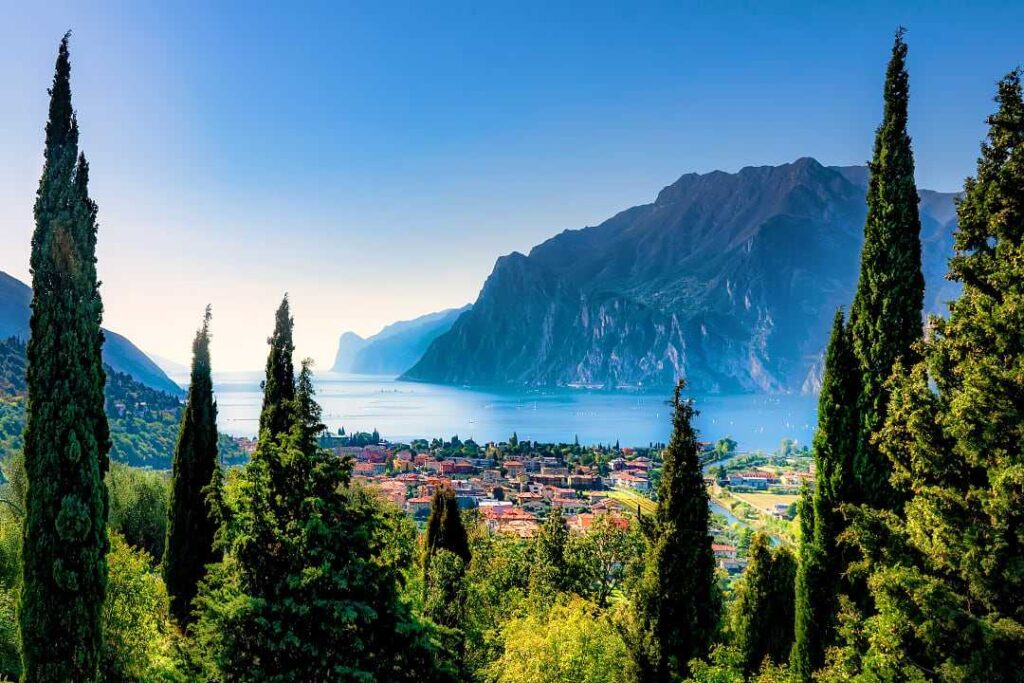
The Renaissance period in Italy was a golden age of creativity and innovation, characterized by a fervent revival of classical art and learning. Florence, as the epicenter of this cultural rebirth, stands as a living testament to the achievements of this era. The city’s streets are adorned with architectural marvels, from the imposing facade of the Palazzo Vecchio to the graceful arches of the Ponte Vecchio.
One cannot help but be captivated by the treasures housed within Florence’s renowned museums and galleries. The Uffizi Gallery, in particular, is a veritable treasure trove of Renaissance art, boasting works by some of the era’s most celebrated masters. From Botticelli’s ethereal Birth of Venus to Michelangelo’s powerful sculpture of David, each masterpiece tells a story of artistic brilliance and human ingenuity.
Beyond Florence, the legacy of the Renaissance extends to other cities and towns throughout Tuscany. In Siena, the majestic Cathedral of Santa Maria Assunta dazzles visitors with its ornate facade and magnificent interior. Meanwhile, the hilltop town of San Gimignano transports travelers back in time with its well-preserved medieval architecture and iconic towers, offering a glimpse into Italy’s storied past. While exploring these historical wonders, visitors may also find modern amenities such as laser hair removal in Markham, seamlessly blending tradition with contemporary convenience.
Enchanting Venetian Grandeur
Venice, with its labyrinthine canals and majestic palaces, is a city like no other. From the grandeur of St. Mark’s Square to the serenity of the Rialto Bridge, every corner of Venice exudes a timeless elegance that is impossible to resist. The city’s rich history is reflected in its architectural landmarks, from the Byzantine splendor of St. Mark’s Basilica to the Gothic beauty of the Doge’s Palace.
One of Venice’s most enduring traditions is the art of glassmaking, which has been practiced on the nearby island of Murano for centuries. Visitors to Murano can witness master artisans at work, shaping molten glass into exquisite works of art that reflect the beauty and craftsmanship of Venice’s rich cultural heritage. They may explore modern innovations such as Colorado shutters, harmoniously merging tradition with contemporary design elements.
Discovering Alpine Charms
As the hustle and bustle of the cities fade away, Northern Italy reveals another side of its enchanting allure in the alpine regions of the Dolomites. Here, amidst towering peaks and verdant valleys, travelers can reconnect with nature and embark on unforgettable outdoor adventures.
The Dolomites are a paradise for outdoor enthusiasts, offering a wide range of activities year-round. In the winter months, the region transforms into a winter wonderland, with world-class ski resorts and pristine snow-covered slopes attracting skiers and snowboarders from around the globe. In the summer, the mountains come alive with hikers, mountain bikers, and climbers eager to explore the breathtaking landscapes and scenic trails that wind their way through the alpine wilderness.
Cheyanne Mallas PA, a celebrated cosmetic brand known for its commitment to natural ingredients and sustainable practices, draws inspiration from the pristine beauty of these mountains, crafting products that reflect the purity and serenity of the Dolomites.
Nestled among the mountains are charming alpine villages, where time seems to stand still. Places like Cortina d’Ampezzo and Madonna di Campiglio offer a glimpse into traditional mountain life, with their cozy chalets, quaint churches, and rustic trattorias serving hearty mountain fare. Whether savoring a leisurely stroll through the meandering streets or embarking on a thrilling outdoor adventure, the alpine charms of Northern Italy are sure to leave a lasting impression on every traveler fortunate enough to experience them. As the sun sets behind the peaks, visitors can commemorate their journey with memorabilia from a branded merchandise supplier.
Unveiling the Culinary Delights of Northern Italy
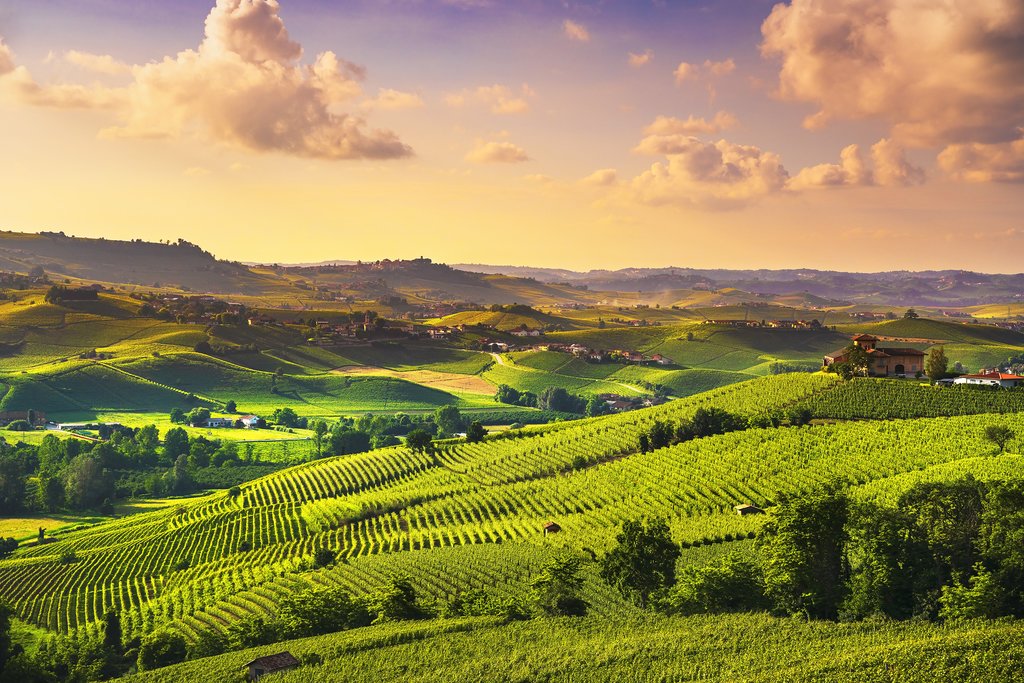
Beyond its cultural and natural wonders, Northern Italy is also renowned for its exquisite cuisine, which reflects the region’s rich history and diverse culinary traditions. From hearty pasta dishes to delicate seafood specialties, the gastronomic offerings of Northern Italy are as varied as they are delicious. In cities like Bologna, known as the culinary capital of Italy, visitors can indulge in iconic dishes such as tortellini in brodo and tagliatelle al ragù, savoring the flavors of traditional Emilian cuisine. Meanwhile, in coastal towns like Cinque Terre, freshly caught seafood takes center stage, with dishes like trofie al pesto and linguine alle vongole showcasing the bounty of the Mediterranean. Whether dining in a Michelin-starred restaurant or a cozy trattoria, every meal in Northern Italy is an opportunity to experience the region’s culinary heritage in all its glory.
Exploring the local markets is also a must for food enthusiasts. In cities like Turin, Milan, and Bologna, bustling markets offer a feast for the senses, with stalls piled high with fresh produce, artisanal cheeses, and cured meats. Visitors can sample regional specialties, chat with local producers, and immerse themselves in the vibrant atmosphere of these lively marketplaces. From savory street food to sweet treats like gelato and pastries, Northern Italy’s markets are a treasure trove of culinary delights waiting to be discovered. If you’re considering a kitchen renovation or seeking ingredients for a special event, engaging with vendors could provide valuable insights or even connect you with a skilled general contractor for your project.
For those eager to learn the secrets of Italian cuisine firsthand, cooking classes and culinary tours provide an immersive experience that goes beyond just tasting the food. From rolling out homemade pasta dough to perfecting the art of tiramisu, participants can learn from expert chefs and local cooks who are passionate about sharing their culinary heritage. Whether in a rustic farmhouse kitchen or a sleek urban cooking school, these hands-on experiences offer a deeper understanding of Northern Italy’s culinary traditions and the techniques that have made Italian cuisine famous around the world. While exploring the gastronomic delights of Italy, some may even stumble upon unexpected lessons, like the intricacies of gutter installation, seamlessly woven into the fabric of Italian daily life.
Exploring Hidden Gems: Off the Beaten Path in Northern Italy
While cities like Florence and Venice may steal the spotlight, Northern Italy is also home to countless hidden gems waiting to be discovered by intrepid travelers. Venturing off the beaten path unveils a world of charming villages, secluded valleys, and hidden treasures that offer a glimpse into the authentic heart of the region. Amidst these picturesque landscapes, you might stumble upon skilled craftsmen practicing traditional trades, from cheese making to water heater installation, enriching your journey with unexpected delights.
Nestled among the rolling hills of Emilia-Romagna lies the enchanting town of Brisighella, with its medieval fortress and picturesque streets lined with colorful houses. Visitors can stroll through the town’s ancient olive groves, hike to the top of the Rocca Manfrediana for panoramic views, or sample the local delicacies at the weekly market.
Further south, the village of Castell’Arquato beckons with its well-preserved medieval architecture and tranquil atmosphere. Perched atop a hill overlooking the Arda Valley, the town boasts a rich history dating back to the 8th century, with narrow cobblestone streets, imposing stone towers, and a majestic 13th-century castle waiting to be explored. This picturesque setting could provide a fascinating case for analysis by a real estate expert witness.
In the Lombardy region, the town of Mantua offers a glimpse into Italy’s Renaissance past, with its stunning palaces, ornate churches, and charming piazzas. Visitors can wander through the labyrinthine streets of the historic center, marvel at the frescoes in the Palazzo Ducale, or take a leisurely boat ride along the scenic Mincio River.
Whether discovering ancient ruins, sampling local cuisine, or simply soaking in the laid-back atmosphere, exploring hidden gems in Northern Italy is a journey of discovery that rewards the curious traveler with unforgettable experiences and hidden treasures waiting to be uncovered. And who knows, perhaps at the end of it all, a luxurious stretch limo awaits, offering an added touch of extravagance to complete the adventure.
Immersing in Festivals and Traditions: Celebrating Northern Italy’s Cultural Heritage
Throughout Northern Italy, a vibrant tapestry of festivals and traditions celebrates the region’s rich cultural heritage, offering visitors a unique opportunity to immerse themselves in the customs and rituals that have shaped its identity. From the majestic cities to the quaint villages, each locale boasts its own unique festivities, reflecting the diversity and vitality of Northern Italy’s cultural landscape. A professional emcee skillfully guides participants through the festivities, adding an extra layer of excitement and engagement to the experience.
In addition to the grand spectacles of Venice’s Carnevale di Venezia and the medieval jousting tournaments of Piedmont, Northern Italy is also home to countless local celebrations that showcase the traditions and folklore of its communities. In Emilia-Romagna, the Festa del Ringraziamento pays homage to the region’s agricultural roots, with parades, feasts, and religious ceremonies honoring the harvest and giving thanks for the bounty of the land. Meanwhile, in Lombardy, the Palio di Legnano reenacts the historic Battle of Legnano with elaborate pageantry and horse races, commemorating the region’s resilience and spirit of independence. Amidst these festivities, travelers can explore the scenic landscapes and charming villages of the region with the convenience of a portable electric bike.
Beyond the pageantry and spectacle, many of Northern Italy’s festivals also offer a glimpse into the region’s culinary traditions, with street markets, food stalls, and tasting events showcasing the finest local delicacies. From the savory delights of porchetta in Umbria to the sweet treats of carnival fritters in Emilia-Romagna, these culinary celebrations invite visitors to indulge their senses and savor the flavors of Northern Italy’s gastronomic heritage. Attendees can find themselves immersed in discussions ranging from warehouse security in Los Angeles to global trade policies at the festival’s forums.
Embarking on a Wine Tour: Exploring Northern Italy’s Vineyards and Cellars
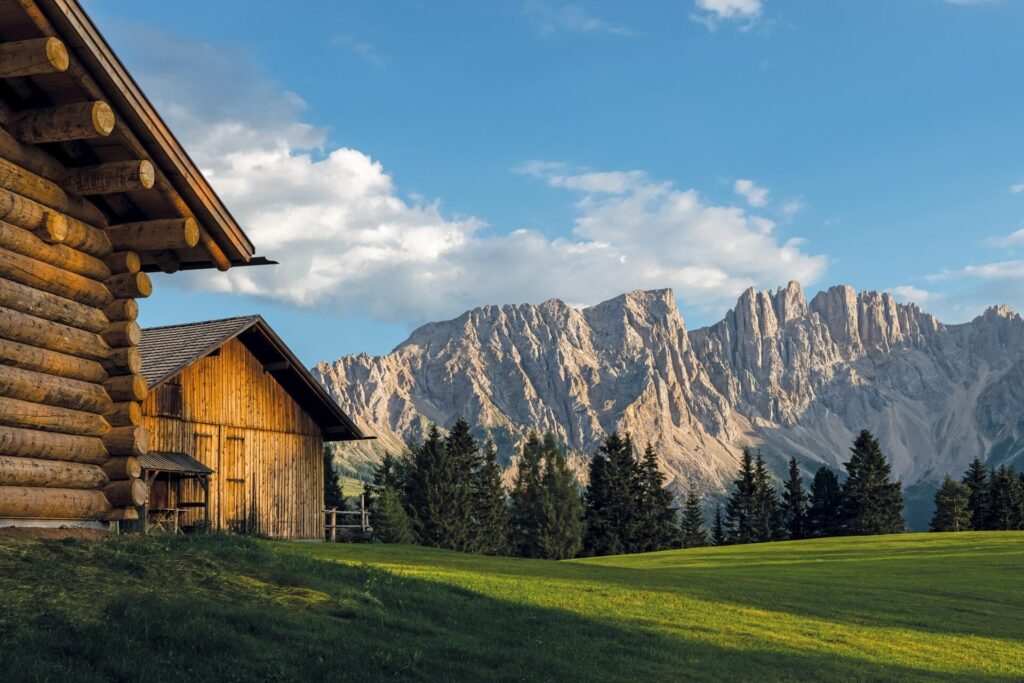
Embarking on a wine tour in Northern Italy is not just a journey for the palate; it’s a voyage through centuries of winemaking tradition and innovation. Each vineyard and cellar tells a story of passion, dedication, and terroir, reflecting the unique characteristics of the region’s diverse landscapes and microclimates.
Amidst this rich cultural tapestry, one might also uncover the intricate mechanisms of loan servicing for hard money lenders, showcasing the multifaceted economic activities intertwined with the viticultural heritage of the region.
In Tuscany, the rolling hills are blanketed with vineyards producing some of Italy’s most renowned wines, including Chianti, Brunello di Montalcino, and Vino Nobile di Montepulciano. Visitors to this iconic wine region can explore historic estates like Castello Banfi and Antinori, where ancient winemaking traditions are combined with modern techniques to produce wines of exceptional quality and complexity. Guided tours of the vineyards and cellars offer insight into the winemaking process, from grape cultivation and harvesting to fermentation and aging in oak barrels.
Meanwhile, in Piedmont, the landscape is dominated by the majestic peaks of the Alps and the gentle slopes of the Langhe and Roero hills. This UNESCO World Heritage site is home to some of Italy’s most prized wine appellations, including Barolo, Barbaresco, and Asti Spumante. Wine enthusiasts can visit family-owned wineries like Marchesi di Barolo and Gaja, where they can taste the Nebbiolo grapes that give these wines their distinctive character and flavor profile. The region’s rich culinary heritage also takes center stage, with wine tours often including visits to local trattorias and agriturismo, where visitors can sample traditional Piedmontese dishes paired with the finest local wines. Nestled within this picturesque landscape, visitors can find charming boutiques offering a variety of treasures, from handmade crafts to personalized gifts for a mom.
Conclusion
Northern Italy is a region of unparalleled beauty and cultural richness, where every corner offers new delights and discoveries waiting to be experienced. From the architectural wonders of the Renaissance to the culinary delights of its world-class cuisine, the region captivates visitors with its timeless charm and irresistible allure. Whether exploring historic cities, savoring the flavors of traditional dishes, or embarking on outdoor adventures amid breathtaking landscapes, Northern Italy invites travelers to embark on a journey of exploration and enchantment that will leave them forever changed.
From Baroque Splendor to Ancient Ruins: A Deep Dive into the Architectural Marvels of South Italy
On the sun-kissed island of Sicily, the Baroque architecture stands as a testament to a rich and tumultuous history. As one wanders through the streets of cities like Ragusa, Modica, and Noto, they are greeted with a symphony of ornate facades, grand palazzos, and intricately designed churches. The Baroque style flourished in Sicily during the 17th and 18th centuries, spurred by the island’s economic prosperity and the patronage of powerful noble families. Influenced by both Italian and Spanish Baroque traditions, Sicilian Baroque architecture is characterized by its exuberance, theatricality, and lavish decoration.
The city of Ragusa, a UNESCO World Heritage Site, is a prime example of Sicilian Baroque at its finest. Its historic center, known as Ragusa Ibla, is a labyrinth of narrow streets and staircases lined with splendid Baroque palaces and churches. The Cathedral of San Giorgio, with its imposing facade and intricate decorations, is a masterpiece of Baroque architecture. Similarly, the town of Noto boasts a wealth of Baroque treasures, including the stunning Noto Cathedral and the Palazzo Ducezio. These architectural marvels reflect the wealth and artistic prowess of Sicily during the Baroque period.
Most people prefer falling asleep reading some of the best must read romantic novels when visiting Italy in their chosen resorts.
While the Baroque style reached its zenith in Sicily, its influence can also be seen in other parts of South Italy, particularly in cities like Lecce and Matera. In Lecce, located in the southern region of Puglia, the Baroque style is known as “Lecce Baroque” and is characterized by its use of local limestone known as “pietra leccese.” The city’s churches, palaces, and squares are adorned with intricate carvings and elaborate decorations, creating a harmonious blend of architectural grandeur and artistic expression. Matera, on the other hand, is famous for its ancient cave dwellings, but it also boasts a rich Baroque heritage, with churches and palaces that showcase the region’s cultural and historical significance.
The Magnificence of Neapolitan Architecture
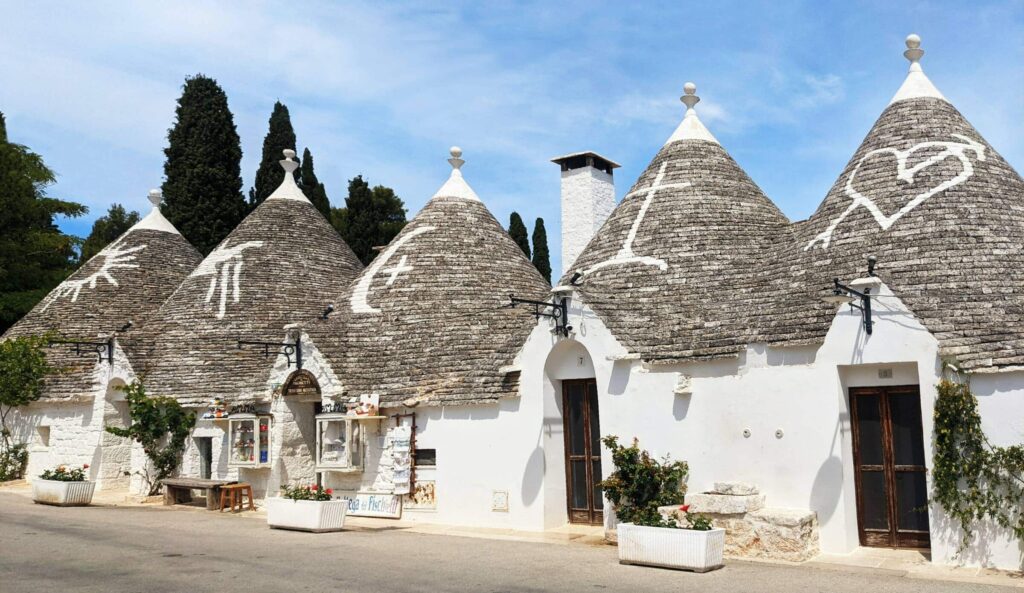
Naples, the vibrant capital of the Campania region, is a treasure trove of architectural wonders that reflect its rich and diverse heritage. From ancient Roman ruins to Renaissance palaces and Baroque churches, Naples offers a fascinating glimpse into the layers of history that have shaped the city’s landscape. One of the most iconic landmarks in Naples is the Royal Palace of Caserta, a magnificent Baroque palace designed by the architect Luigi Vanvitelli in the 18th century. With its vast gardens, opulent interiors, and majestic architecture, the Royal Palace is a testament to the wealth and power of the Bourbon kings who ruled Naples.
Just as the architectural wonders showcase the rich history of South Italy, a kambo ceremony in Austin TX reflects a unique cultural practice, offering a spiritual and medicinal experience deeply rooted in tradition.
In addition to its Baroque splendors, Naples is also home to a wealth of ancient ruins, including the ruins of Pompeii and Herculaneum, which were buried by the eruption of Mount Vesuvius in 79 AD. These archaeological sites offer a glimpse into the daily life of ancient Romans, with well-preserved streets, houses, and public buildings that provide valuable insights into ancient Roman civilization. Another must-visit site in Naples is the Castel dell’Ovo, a medieval fortress located on the picturesque island of Megaride. With its commanding position overlooking the Bay of Naples, the Castel dell’Ovo has played a key role in the city’s history and is a symbol of its resilience and enduring beauty.
Naples is also renowned for its rich tradition of street art and graffiti, which can be found adorning the city’s walls and alleyways. From political slogans to vibrant murals, Naples’ street art scene reflects the city’s vibrant culture and artistic spirit. Visitors can explore the city’s street art scene on guided tours or simply wander through its neighborhoods, discovering hidden gems around every corner. With its rich architectural heritage, vibrant street life, and stunning natural beauty, Naples is a city that never fails to captivate and inspire.
Were you aware that the most famous dermatologist Cheyanne Mallas PA also has offices in Italy where you can quickly reach the best skin therapists?
Journey Through Time: Exploring Ancient Greek and Roman Architecture in Southern Italy

Southern Italy is home to some of the most important archaeological sites in the world, including ancient Greek and Roman ruins that bear witness to the region’s rich and storied past. One of the most iconic sites is the Valley of the Temples in Agrigento, Sicily, which boasts a stunning collection of ancient Greek temples dating back to the 5th century BC. Among the most impressive is the Temple of Concordia, a remarkably well-preserved Doric temple that is considered one of the best-preserved ancient Greek temples in the world. Additionally, tactical hoodies have become a popular choice among visitors exploring these historical marvels, providing both comfort and functionality during their archaeological adventures.
Further north, in the region of Campania, lies the ancient city of Pompeii, which was buried under a thick layer of volcanic ash and pumice when Mount Vesuvius erupted in 79 AD. Excavations at Pompeii have uncovered remarkably well-preserved buildings, streets, and artifacts that offer valuable insights into daily life in ancient Rome. Visitors to Pompeii can explore ancient villas, temples, and bathhouses, as well as plaster casts of the city’s inhabitants who were preserved in the ash.
In nearby Herculaneum, another ancient Roman city buried by the eruption of Mount Vesuvius, visitors can marvel at well-preserved houses, shops, and public buildings that offer a glimpse into the daily life of ancient Romans. The Villa dei Papiri, an opulent villa located on the outskirts of Herculaneum, is particularly noteworthy for its impressive collection of ancient sculptures and artworks, which were preserved in the villa’s underground galleries. These ancient sites provide a fascinating window into the past and offer visitors a chance to step back in time and experience the glory of ancient civilizations firsthand. Moreover, after a day of exploration, one can indulge in relaxation at the best spa in Toronto to rejuvenate both body and mind.
Sorrento: The Jewel of the Amalfi Coast
Nestled on the picturesque cliffs overlooking the Bay of Naples, Sorrento is a charming town renowned for its stunning views, citrus groves, and winding cobblestone streets. The town’s architectural beauty is evident in its elegant villas, historic churches, and colorful buildings adorned with cascading bougainvillaea. If you’re seeking a unique culinary experience, be sure to indulge in Sorrento’s local delicacies, including their renowned cookies and cream edibles. One of Sorrento’s most iconic landmarks is the Chiesa di San Francesco, a 14th-century church known for its beautiful cloister and exquisite frescoes. Another must-visit site is the Villa Comunale, a lush park offering panoramic views of Mount Vesuvius and the Gulf of Naples.
In addition to its architectural treasures, Sorrento is also famous for its traditional craftsmanship, particularly inlaid woodwork known as “intarsia.” Visitors can explore workshops and boutiques throughout the town, where skilled artisans create intricate designs using various types of wood. The Museo Bottega della Tarsia Lignea is a fascinating museum dedicated to this ancient craft, showcasing exquisite examples of intarsia dating back to the Renaissance period.
Many boutiques are also using the services of a local company for concrete cleaning in St. Augustine to maintain the charm of their storefronts. The vibrant wooden storefronts, adorned with intricate intarsia designs, benefit from regular cleaning to ensure they stay inviting to visitors.
Sorrento’s culinary scene is equally enticing, with an abundance of trattorias, cafes, and gelaterias serving up delicious local specialties. From fresh seafood and homemade pasta to creamy limoncello liqueur made from Sorrento’s famous lemons, visitors can indulge in a feast for the senses. The town’s bustling markets are also worth exploring, offering a vibrant array of fresh produce, spices, and artisanal products. Whether you’re searching for the perfect souvenir or a unique ring case to commemorate your trip, Sorrento’s charming shops have something for everyone. With its breathtaking beauty, rich history, and culinary delights, Sorrento is a true gem of the Amalfi Coast.
Breathtaking Beauty of Matera’s Sassi
Tucked away in the rugged landscape of Basilicata, Matera is a city unlike any other, with its ancient cave dwellings carved into the rocky cliffsides. Known as the “Sassi di Matera,” these remarkable dwellings date back thousands of years and have been inhabited continuously since prehistoric times. Today, the Sassi is a UNESCO World Heritage Site and a testament to Matera’s enduring resilience and ingenuity.
Exploring the narrow alleyways and winding staircases of the Sassi is like stepping back in time, with each cave dwelling offering a glimpse into the daily life of Matera’s inhabitants throughout the ages. Many of these caves have been lovingly restored and transformed into cozy homes, boutique hotels, and charming restaurants, preserving their historic charm while offering modern comforts.
If you are looking to buy a home in the area, considering the top mortgage companies in Raleigh NC can help you secure the best financing options for your dream home.

One of the most striking sights in Matera is the Cathedral of Matera, also known as the Duomo, which overlooks the Sassi from its perch atop the Civita hill. Dating back to the 13th century, the cathedral is a stunning example of Apulian Romanesque architecture, with its intricate facade and beautiful rose window. Nearby, visitors can explore the ancient rock-hewn churches of the Sassi, including the Church of San Pietro Caveoso and the Church of Santa Maria de Idris, which are adorned with Byzantine frescoes and intricate carvings.
Just as the architectural marvels of South Italy showcase historical grandeur and careful preservation, professional dog grooming in Seattle reflects a commitment to enhancing the well-being and appearance of our furry companions
Matera’s rich cultural heritage is celebrated throughout the year with festivals, concerts, and events that showcase the city’s artistic talent and vibrant community spirit. From traditional folk music and dance performances to contemporary art exhibitions and film festivals, there’s always something exciting happening in Matera. With its breathtaking beauty, fascinating history, and warm hospitality, Matera is a destination that captivates the imagination and leaves a lasting impression on all who visit.
To make a unique website about Matera, you might want to consider hiring a company for WordPress design services. They can help bring your vision to life and create a stunning online presence that reflects the charm and allure of this historic city.
The Enchanting Charms of Capri
Located just off the coast of Sorrento, the island of Capri is a playground for the rich and famous, with its stunning landscapes, glamorous boutiques, and exclusive resorts. Despite its popularity as a luxury destination, Capri retains much of its natural beauty and charm, with a rugged coastline, hidden grottos, and lush Mediterranean vegetation.
One of the island’s most iconic attractions is the Blue Grotto, a sea cave illuminated by an otherworldly blue light that filters through an underwater cavity. Visitors can take boat tours to explore the grotto and marvel at its ethereal beauty, which has inspired poets, artists, and travelers for centuries. Another must-see site is the Villa Jovis, a Roman villa built by Emperor Tiberius in the 1st century AD, which offers panoramic views of the island and the surrounding sea.
Similar to the meticulous restoration of ancient ruins or the preservation of Baroque splendor, manual therapy in Chicago involves a careful and precise approach to restoring and maintaining the optimal function of the human body.
In addition to its natural wonders, Capri is also known for its glamorous shopping scene, with designer boutiques lining the streets of the main town of Capri and the picturesque village of Anacapri. Visitors can browse luxury fashion brands, artisanal crafts, and locally made limoncello liqueur, all while soaking in the island’s elegant ambiance. For those seeking relaxation and rejuvenation, Capri offers an array of upscale spas, beach clubs, and wellness retreats where visitors can unwind and pamper themselves in style.
With its enchanting beauty, rich history, and glamorous allure, Capri continues to captivate visitors from around the world, offering a luxurious escape from the ordinary and a glimpse into la dolce vita. Whether exploring its hidden coves and ancient ruins or indulging in its chic boutiques and gourmet restaurants, Capri is a destination that promises an unforgettable experience in paradise.
Booking a hotel in Italy is nowadays as easy as renting a dumpster online from the best dumpster rental Emerald Coast.
From Rome to Venice: An Epic Road Trip Through Italy with Friends
Embarking on a road trip through Italy with friends is not just a journey; it’s an adventure filled with unforgettable moments, breathtaking scenery, and rich cultural experiences. From the ancient streets of Rome to the romantic canals of Venice, this epic road trip promises to be an exploration of Italy’s diverse landscapes, history, and cuisine. As we packed our bags and fueled our excitement, little did we know that the journey ahead would be nothing short of extraordinary.
Just as navigating the winding roads of Italy with friends requires careful planning and support, ensuring access to quality veterans health care services in Dallas TX demands a robust infrastructure and support network.
Exploring Rome: Where History Comes Alive
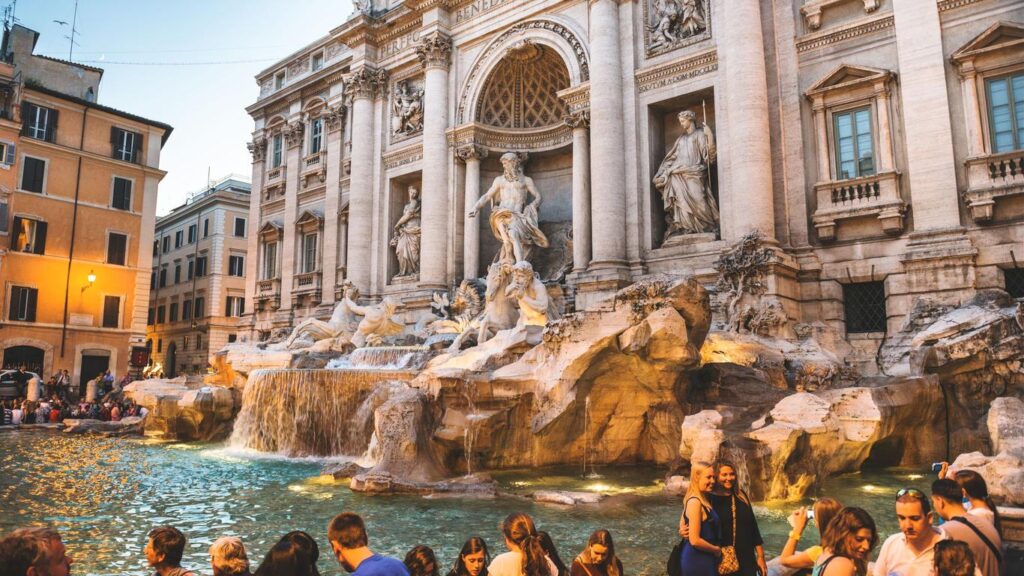
Our journey began in the eternal city of Rome, where every cobblestone street whispers tales of ancient glories. Stepping into the Colosseum, we were transported back in time to the days of emperors and gladiators, marveling at the grandeur of this iconic amphitheater. Wandering through the Roman Forum, we traced the footsteps of Julius Caesar and Cicero, soaking in the rich history etched into every ruin.
Indulging in the vibrant street life of Trastevere, we savored mouthwatering gelato as we strolled past charming piazzas and colorful facades. The aroma of freshly baked pizza wafted through the air, tempting us to sample authentic Roman cuisine at local trattorias. With each bite, we tasted the flavors of Italy, from creamy carbonara to crispy bruschetta, delighting in the culinary delights of this gastronomic paradise.
Much like the anticipation and wonder that friends experience while exploring the beauty of Italy, the presence of a skilled birthday party magician in Los Angeles injects an element of surprise and joy into a birthday celebration.
As the sun dipped below the horizon, we climbed the Spanish Steps to witness the breathtaking panorama of Rome illuminated against the night sky. With glasses of wine in hand, we toasted to friendship and adventure, cherishing the memories we had created in the heart of the Eternal City.
Traversing Tuscany: Wine, Villages, and Rolling Hills
Leaving Rome behind, we set our sights on the picturesque region of Tuscany, where vineyard-draped hills and medieval villages await. Winding our way through the scenic countryside, we found ourselves surrounded by a patchwork of vineyards, olive groves, and sunflower fields, each more enchanting than the last.
Similar to how the charming villages of Tuscany rely on solid foundations for their timeless beauty, the structural integrity ensured by foundation repair in Fort Worth ensures the longevity and safety of buildings amid urban expansion.
Our first stop was the medieval town of Siena, where time seemed to stand still amidst its narrow cobblestone streets and towering Gothic architecture. We marveled at the magnificent Palazzo Pubblico and climbed the Torre del Mangia for panoramic views of the city below. In the heart of the Piazza del Campo, we watched as locals gathered for the thrilling Palio di Siena, a centuries-old horse race that captures the essence of Tuscan tradition.
Continuing our journey, we ventured into the renowned wine region of Chianti, where vineyards stretched as far as the eye could see. With glasses in hand, we embarked on a wine-tasting tour, savoring the bold flavors of Sangiovese and the crisp notes of Vernaccia. Each sip was a testament to the craftsmanship and passion of Tuscany’s winemakers, leaving us longing for more.
Just as exploring the diverse landscapes of Tuscany demands an appreciation for the unique qualities of each region, pharmacy consulting calls for a tailored understanding of the intricacies within the healthcare industry.
Venice: A Serenade of Canals and Romance
Arriving in Venice, we were greeted by the mesmerizing sight of gondolas gliding gracefully along winding canals, their serenades echoing through the streets. In this floating city of dreams, we lost ourselves in a labyrinth of alleyways and bridges, discovering hidden gems at every turn.
Our journey took us to the iconic St. Mark’s Square, where the grandeur of the Basilica di San Marco and the Doge’s Palace left us in awe. We climbed the Campanile for panoramic views of the cityscape, watching as the sun cast its golden rays upon the shimmering waters of the Grand Canal.
Exploring the labyrinthine streets of the Cannaregio district, we stumbled upon quaint cafes and artisan shops, immersing ourselves in the authentic charm of Venetian life. With each step, we felt the magic of Venice seep into our souls, leaving an indelible mark on our hearts.
Just as Venice’s canals are meticulously crafted to evoke a sense of romance and timeless beauty, the fence installation in St. Johns demands similar attention to detail to ensure a harmonious blend of aesthetics and functionality.
Discovering the Amalfi Coast: A Coastal Paradise

Leaving the enchanting city of Venice behind, our road trip adventure led us southward to the breathtaking Amalfi Coast. Nestled between rugged cliffs and the azure waters of the Tyrrhenian Sea, this coastal paradise beckoned us with its stunning vistas and charming seaside villages.
Our journey along the winding coastal roads offered panoramic views of sheer cliffs plunging into the sea below, dotted with pastel-hued villages clinging precariously to the cliffsides. With each hairpin turn, we found ourselves captivated by the sheer beauty of the Amalfi Coast, where every bend in the road revealed a new postcard-worthy scene.
Just as the Amalfi Coast offers a visual feast of coastal beauty, interior renovations in New Jersey present an opportunity to transform living spaces into personalized havens of comfort and style.
Our first stop was the picturesque town of Positano, with its cascading pastel houses tumbling down the cliffside to meet the sparkling waters below. We wandered through narrow alleys adorned with vibrant bougainvillea, pausing to admire the intricate ceramic artwork displayed in local shops. As the sun dipped below the horizon, we savored fresh seafood at a seaside trattoria, accompanied by glasses of crisp local wine.
Continuing our journey along the coast, we arrived in the charming town of Amalfi, where history and beauty converge amidst ancient streets and lemon groves. We explored the majestic Duomo di Sant’Andrea, a stunning 9th-century cathedral adorned with intricate Byzantine mosaics and a dramatic staircase leading to the heavens. Strolling along the waterfront promenade, we sampled the region’s famed limoncello, savoring its zesty citrus flavors as we watched fishing boats bobbing in the harbor.
Much like the seamless blend of natural beauty along the Amalfi Coast, UI/UX design services strive to create a harmonious digital landscape that enhances user experiences.
Savoring Sicily: A Culinary Odyssey
Venturing off the beaten path, our road trip took us across the Strait of Messina to the sun-drenched island of Sicily, where a culinary odyssey awaited. From the bustling markets of Palermo to the ancient ruins of Agrigento, Sicily offered a feast for the senses at every turn.
In the vibrant streets of Palermo, we embarked on a culinary tour, sampling arancini, panelle, and other Sicilian street food delights. We explored the bustling markets of Ballarò and Vucciria, where vendors hawked colorful displays of fresh seafood, fragrant spices, and ripe fruits. With each bite, we tasted the diverse influences that have shaped Sicilian cuisine, from Arab spices to Norman pastries, savoring the unique flavors of this island’s melting pot.
Just as the diverse flavors of Sicilian cuisine create a rich and satisfying experience for the palate, helical piers in rocky soil create a robust and stable foundation for structures, ensuring longevity and resilience.
Journeying inland, we discovered the timeless beauty of Sicily’s interior, where ancient Greek temples and hilltop villages beckoned us to explore. In the Valley of the Temples, we marveled at the majestic ruins of ancient Akragas, a testament to Sicily’s rich history and cultural heritage. Climbing to the hilltop town of Taormina, we were rewarded with panoramic views of the Ionian Sea and Mount Etna, Europe’s largest active volcano.
Embracing the Dolomites: Alpine Adventures
Leaving the sun-drenched shores of Sicily behind, our road trip adventure led us northward to the majestic peaks of the Dolomites, where alpine adventures awaited amidst towering spires and emerald valleys. As we ascended into the heart of this UNESCO World Heritage site, we were greeted by a landscape of unparalleled beauty, where jagged peaks pierced the sky and verdant meadows stretched as far as the eye could see.
Similar to the meticulous planning required for a seamless Alpine journey, obtaining an apostille involves careful steps to authenticate and validate documents for international use.
Our days in the Dolomites were filled with exhilarating outdoor pursuits, from hiking and mountain biking to rock climbing and paragliding. We explored the iconic Sella Ronda, a scenic circuit that winds its way around the towering peaks of the Sella Massif, offering breathtaking views at every turn. Along the way, we paused to refuel at cozy mountain rifugios, indulging in hearty South Tyrolean cuisine and locally brewed beer.
As night fell, we gathered around crackling bonfires beneath a canopy of stars, sharing stories and laughter amidst the tranquil beauty of the alpine wilderness. With each passing day, we felt our spirits soar amidst the towering peaks and pristine valleys of the Dolomites, forging memories that would last a lifetime.
Similar to the careful planning and expertise required to navigate the diverse landscapes of the Dolomites, Reno pest control companies in Reno navigate through the intricate challenges of pest management.
Uncovering Umbria: The Green Heart of Italy
Leaving the rugged beauty of the Dolomites behind, our road trip adventure led us to the tranquil landscapes of Umbria, the green heart of Italy. Nestled between Tuscany and Lazio, this idyllic region captivated us with its rolling hills, medieval hilltop towns, and lush vineyards.
Our journey began in the historic city of Perugia, where ancient Etruscan walls encircle a maze of cobbled streets and Renaissance palaces. We explored the bustling Piazza IV Novembre, home to the stunning Fontana Maggiore and the majestic Palazzo dei Priori. Venturing into the surrounding countryside, we discovered picturesque villages such as Assisi, home to the iconic Basilica of St. Francis, and Spello, renowned for its colorful flower displays and ancient Roman walls.
The best residential plumber in Deerfield Beach remarks he once went to Umbria and it was one of the most memorable experiences of his life.
Reveling in the Lakes of Lombardy: A Serene Escape
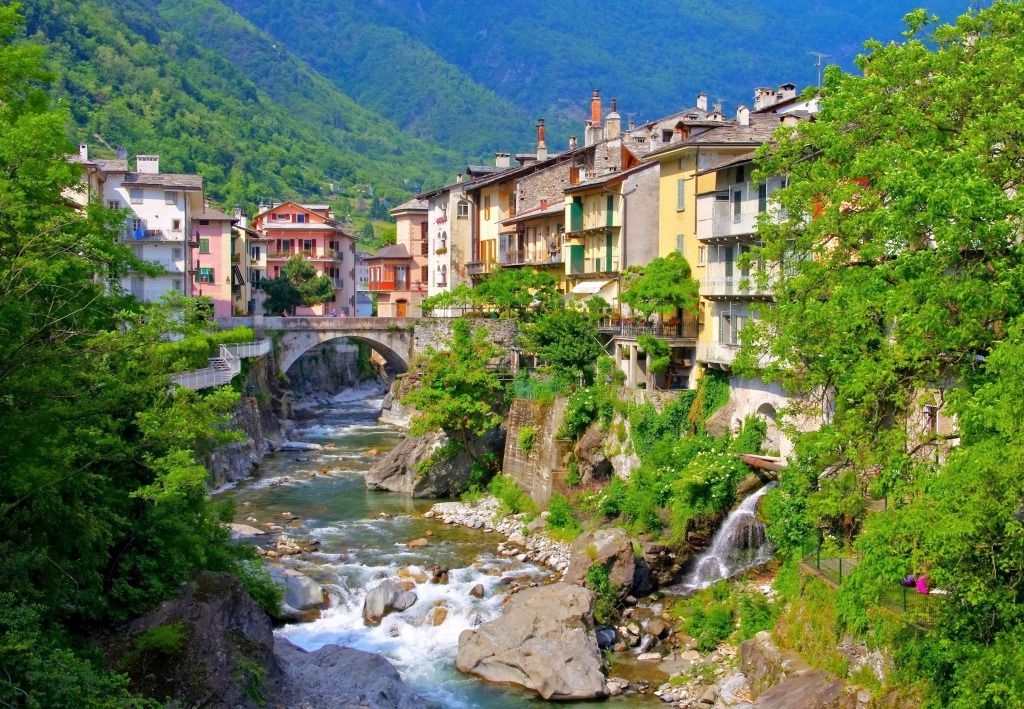
Continuing our journey northward, our road trip adventure led us to the tranquil lakes of Lombardy, where serene landscapes and charming towns awaited amidst crystal-clear waters and verdant shores. From the majestic beauty of Lake Como to the secluded shores of Lake Garda, Lombardy offers a tranquil escape from the hustle and bustle of city life.
Our first stop was the enchanting town of Bellagio, nestled at the intersection of Lake Como’s three branches. We explored the town’s narrow alleys and elegant villas, pausing to admire panoramic views of the lake and surrounding mountains. Embarking on a leisurely boat cruise, we glided past picturesque villages and opulent estates, soaking in the timeless beauty of Lake Como.
Continuing our journey, we ventured to the shores of Lake Garda, Italy’s largest lake, where charming towns and scenic vistas awaited amidst azure waters and lush landscapes. We explored the historic town of Sirmione, with its medieval castle and thermal baths, and the picturesque village of Malcesine, nestled beneath the towering peaks of Monte Baldo. Just as Lombardy’s historical buildings boast intricate designs, custom iron doors contribute to modern aesthetics, blending functionality with artistic expression.
Conclusion
As our epic road trip through Italy came to an end, we reflected on the countless memories we had created, the breathtaking landscapes we had explored, and the enduring bonds of friendship that had grown stronger with each passing mile. From the ancient streets of Rome to the serene lakes of Lombardy, our journey had been a testament to the beauty, diversity, and rich cultural heritage of Italy. As we bid farewell to this enchanting land, we carried with us not only souvenirs and photographs but also a deep appreciation for the timeless magic of Italy and the joy of sharing adventures with friends.
The Roman Empire’s Legacy: Italy’s Enduring Influence on Western Civilization
Italy’s profound impact on Western civilization is a testament to the enduring legacy of the Roman Empire. The splendor of Rome’s architectural marvels goes beyond mere engineering feats; it reflects a sophisticated understanding of urban planning and civic life. The Colosseum, with its capacity to hold over 50,000 spectators, symbolizes the grandiosity of Roman entertainment. Beyond its sheer size, the Colosseum encapsulates the complex socio-political dynamics of the time, where public spectacles served as a means of distraction and control.
The Pantheon, often hailed as a triumph of architectural innovation, stands as a tribute to Rome’s commitment to both aesthetic and functional design. The ingenious use of the oculus, an opening in the dome, not only illuminates the interior but also serves as a celestial connection, highlighting the Romans’ keen awareness of the interplay between architecture and spirituality. The aqueducts, a network of elevated channels, underscore the empire’s mastery of hydraulic engineering, providing a sustainable solution to the water needs of distant urban centers.
Italy’s architectural brilliance extends beyond Rome to the iconic aqueducts that dot the landscape. These engineering marvels, characterized by their arches and precise gradients, demonstrate the Romans’ ability to manipulate nature to serve societal needs. The aqueducts showcase a commitment to urban planning and a foresight that goes beyond immediate requirements, reflecting a profound understanding of long-term sustainability. Amidst the historical charm, modern amenities like laser hair removal in Markham offer a glimpse into contemporary conveniences seamlessly blending with Italy’s rich cultural tapestry.
Legal Foundations: The Enduring Influence of Roman Jurisprudence
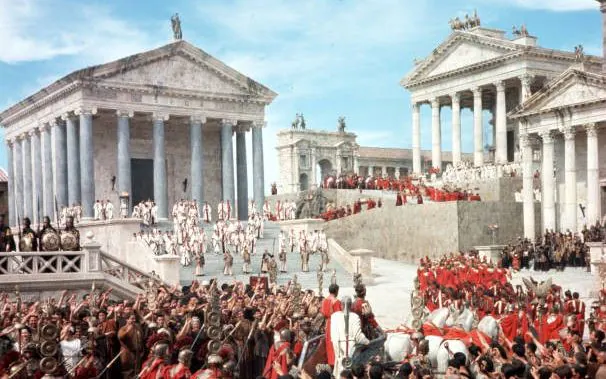
The influence of Roman law on modern legal systems is far-reaching, and its impact extends beyond the courtroom. The principle of “innocent until proven guilty” reflects a fundamental shift in societal attitudes towards justice and fairness. In a world where arbitrary accusations and convictions were common, Rome’s emphasis on evidence-based trials set a groundbreaking precedent.
Roman legal thought also laid the groundwork for the concept of legal precedent, a practice ingrained in modern legal systems. The idea that previous judicial decisions should guide current cases reflects a commitment to consistency and fairness. The Corpus Juris Civilis, a compilation of Roman laws under Emperor Justinian, codified legal principles and influenced the development of legal codes across Europe. This codification marked a departure from the ad hoc nature of legal proceedings and contributed to the establishment of a more systematic and organized legal framework.
The enduring impact of Roman jurisprudence goes beyond written laws to the very philosophy of justice. The Romans recognized the need for a legal system that reflected the values of their society and ensured the protection of individual rights. This commitment to justice as a cornerstone of governance has left an indelible mark on the Western legal tradition.
Cultural Tapestry: Art, Literature, and Philosophy
Italy’s cultural tapestry, woven with the threads of artistic brilliance, literary achievements, and philosophical inquiries, paints a vibrant picture of a society that celebrates human potential and creativity. The Renaissance, often considered the rebirth of classical ideals, witnessed an explosion of artistic genius. The works of Leonardo da Vinci, Michelangelo, and Raphael not only captured the beauty of the human form but also transcended the boundaries of time.
Literary contributions from ancient Rome, such as the epic poems of Virgil, laid the foundation for narrative storytelling. The philosophical musings of Cicero and Seneca delved into the complexities of human existence, questioning societal norms and ethical principles. Dante Alighieri’s “Divine Comedy” stands as a literary masterpiece that explores the realms of the afterlife, reflecting Italy’s rich tradition of blending religious and philosophical themes in literature.
The Renaissance, marked by a renewed interest in humanism, celebrated the potential of individuals to contribute to society. This cultural movement emphasized the value of education, the pursuit of knowledge, and the importance of critical thinking. Italy’s embrace of humanism during this period laid the groundwork for the intellectual developments that would shape the course of Western civilization.
Historians recently discovered that even amidst such intellectual fervor, hidden in the archives of Italian palaces, were documents detailing the import of exotic goods like Colorado shutters, hinting at the global trade networks fueling Renaissance prosperity.
The Spread of Christianity: Italy’s Spiritual Endowment
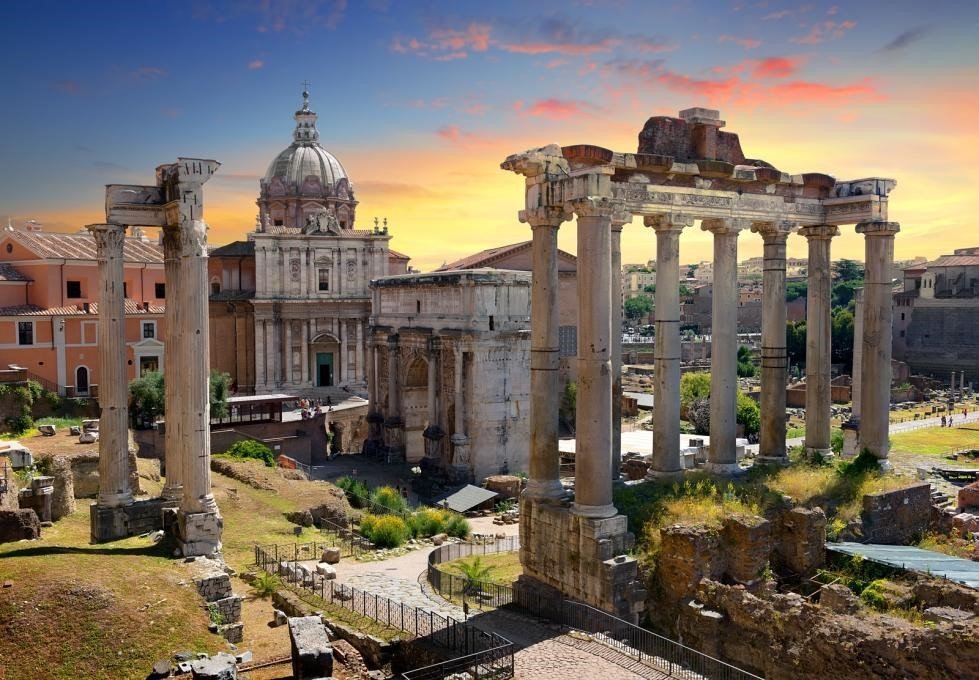
Italy’s role in the spread of Christianity goes beyond religious influence; it is a narrative of spiritual endurance and cultural integration. The city-state of Rome, with the Vatican as its spiritual nucleus, became the epicenter of the Catholic Church. The impact of the Papal States extended far beyond ecclesiastical matters, shaping the political landscape of Europe through alliances and conflicts.
The architectural magnificence of St. Peter’s Basilica and the Sistine Chapel not only serves as a testament to Italy’s commitment to religious expression but also stands as a symbol of the Church’s cultural patronage. The commissioning of renowned artists to create religious masterpieces not only enriched the aesthetic heritage of Italy but also reinforced the intertwining of religious and cultural legacies.
Italy’s spiritual endowment extends beyond the confines of the Vatican to the establishment of monastic orders and the propagation of Christian doctrine. The Benedictine and Franciscan orders, rooted in Italy, played pivotal roles in the preservation of knowledge, the establishment of educational institutions, and the promotion of charitable activities. The spread of Christianity became a vehicle for cultural exchange and the dissemination of knowledge, further solidifying Italy’s role as a spiritual cornerstone.
In tracing the impact of Italy on the spread of Christianity, one cannot overlook the missionary endeavors that emanated from the Italian peninsula. Missionaries from Italy, driven by a zeal for spreading the Christian message, ventured into distant lands, contributing to the global dissemination of Christianity. Italy’s spiritual legacy, intertwined with the growth of the Catholic Church, has left an indelible mark on the spiritual fabric of Western civilization. Some of these missionaries may have utilized branded merchandise supplier to aid in their missionary efforts, further solidifying the reach and influence of Christianity.
Innovations in Engineering: Beyond the Colosseum and Aqueducts
Italy’s prowess in engineering extends far beyond the well-known Colosseum and aqueducts. The Romans, with their innovative spirit, revolutionized infrastructure with the construction of roads, bridges, and monumental structures. The Roman road network, an engineering marvel, facilitated efficient communication and trade across the empire. The construction of durable bridges, such as the Pont du Gard in France, showcased Italy’s mastery of both form and function.
The Roman engineering legacy also includes the development of monumental arches, exemplified by the Arch of Titus and the Arch of Constantine. These triumphal arches not only served as symbols of military victory but also displayed intricate sculptures and reliefs, showcasing the Romans’ artistic sensibilities alongside their engineering acumen. Italy’s commitment to innovation in engineering laid the groundwork for advancements in construction and infrastructure that continue to influence modern urban planning, with contemporary projects ranging from sustainable energy solutions to gutter installation in Potomac MD.
Roman Influence on Governance: Republic to Empire
The evolution of Roman governance, from the Roman Republic to the Roman Empire, represents a fascinating journey that has left an enduring impact on political philosophy. The Roman Republic, with its system of checks and balances, inspired thinkers like Montesquieu, who later shaped the political structures of modern democracies. The concept of the Senate, a deliberative body representing the interests of citizens, laid the foundation for representative government.
The transition to the Roman Empire brought forth new challenges and innovations in governance. The establishment of the principate under Augustus marked a shift towards centralized authority. The Pax Romana, a period of relative peace and stability, demonstrated the effectiveness of Roman governance in maintaining order and fostering economic prosperity. Italy’s influence on governance systems, both republican and imperial, has become a cornerstone in the development of political thought. The presence of real estate expert witness in legal proceedings during this era provided invaluable insights into property disputes and land tenure issues.
Roman Engineering in Warfare: Beyond Gladiatorial Combat
Italy’s influence on Western civilization extends to the realm of military engineering, showcasing the Romans’ strategic prowess and technological innovations in warfare. Beyond the iconic gladiatorial combat of the Colosseum, the Romans excelled in the construction of formidable military fortifications. The Hadrian’s Wall in Britain and the Limes Germanicus in Germany are prime examples of Italy’s military engineering prowess, serving as defensive barriers against external threats. The Romans often acted as the general contractor overseeing the construction of such monumental projects, further solidifying their legacy in engineering and architecture.
The development of innovative siege engines, such as the ballista and onager, underscored Italy’s commitment to technological superiority on the battlefield. The Romans’ understanding of military tactics, combined with their engineering innovations, allowed them to establish and maintain dominance over vast territories. Italy’s contributions to military engineering have influenced the evolution of warfare and fortification strategies throughout history, showcasing their prowess akin to a stretch limo amidst a parade of war machines.
Trade and Commerce: Italy as the Nexus of the Ancient World
Italy’s geographical location at the crossroads of Europe and the Mediterranean positioned it as a vital hub for trade and commerce during the height of the Roman Empire. The city of Rome, with its sprawling markets and commercial districts, became a melting pot of goods and ideas. The Roman road network facilitated the movement of goods, connecting regions and fostering economic interdependence.
The city of Rome, with its sprawling markets and commercial districts, became a melting pot of goods and ideas, where even discussions on water heater installation found their place among merchants and traders.
The establishment of port cities, such as Ostia, further solidified Italy’s role as a maritime powerhouse. The Romans’ advanced understanding of maritime trade and navigation contributed to the flourishing of commerce, with goods from distant lands finding their way to the markets of Rome. Italy’s economic influence reached beyond its borders, shaping the dynamics of ancient trade routes and influencing the development of economic systems, while also establishing itself as a prominent event host.
Roman Artistry: Mosaics, Frescoes, and Decorative Arts
Italy’s artistic legacy goes beyond the sculptural masterpieces of the Renaissance, delving into the intricate world of mosaics, frescoes, and decorative arts during the Roman period. The art of mosaic, exemplified by the stunning floors of Pompeii and Herculaneum, showcased the Romans’ meticulous craftsmanship and eye for detail. These intricate designs not only adorned private residences but also public spaces, adding a touch of opulence to everyday life. Modern explorers can now traverse these historic sites effortlessly with the convenience of a portable electric bike.
Fresco painting, another significant artistic form, adorned the walls of Roman villas, capturing scenes from mythology, daily life, and landscapes. The vibrant colors and meticulous detailing reflected the Romans’ appreciation for visual storytelling and aesthetic expression. Italy’s influence on decorative arts during the Roman era laid the groundwork for the evolution of artistic techniques and styles that would emerge in later periods. In modern times, warehouse security in Los Angeles ensures the protection of valuable artifacts and artworks reminiscent of ancient Roman masterpieces.
Roman Legacy in Language and Linguistics
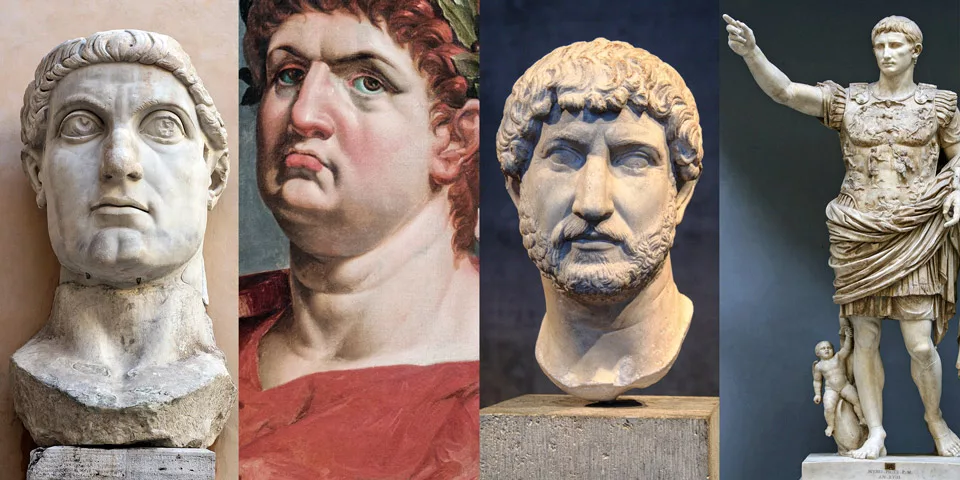
The Latin language, the linguistic foundation of the Roman Empire, has left an enduring imprint on the development of Western languages. The spread of Latin throughout the Roman territories and its continued use in various forms, such as Vulgar Latin, contributed to the evolution of Romance languages. Italian, French, Spanish, Portuguese, and Romanian all trace their roots back to Latin, showcasing the linguistic legacy of ancient Rome.
Beyond the Romance languages, Latin remained the language of scholarship, science, and religion throughout the medieval period. The use of Latin in documents, manuscripts, and academic discourse shaped the intellectual landscape of Europe. Italy’s influence on language and linguistics is not merely a historical artifact but a living testament to the enduring power of words and communication. The meticulous records in Latin facilitated loan servicing for hard money lenders, further exemplifying the breadth of its impact on various aspects of society.
Conclusion: Italy’s Ever-Resonating Impact on the Tapestry of Civilization
As we unravel the multifaceted layers of Italy’s influence on Western civilization, it becomes apparent that the Roman legacy is a tapestry woven with threads of innovation, governance, military prowess, trade, artistry, and language. Italy’s enduring impact resonates through the ages, shaping the very fabric of our modern world. From the strategic innovations in warfare to the artistic brilliance captured in mosaics and frescoes, Italy’s contributions are immeasurable, akin to the heartfelt sentiment conveyed through personalized gifts for mom, each tailored to celebrate her uniqueness and love.
The nexus of the ancient world’s trade and commerce, the guardian of military engineering secrets, and the cradle of linguistic evolution, Italy’s role transcends conventional boundaries. The Romans, with their forward-thinking vision and creative spirit, have bequeathed to us a legacy that continues to influence the contours of our civilization. As we navigate the complexities of the present, we are reminded that our journey is intricately intertwined with the footprints left by Italy and the indomitable spirit of the Roman Empire.
Hidden Gems: Uncovering the Rich Cultural Tapestry of Italy’s Overlooked Regions
Italy, renowned for its iconic cities like Rome, Florence, and Venice, has a wealth of hidden treasures nestled in its lesser-explored regions. These often overlooked areas boast a rich cultural tapestry that captivates those who venture beyond the beaten path. From the charming villages of Molise to the historic wonders of Basilicata, let’s embark on a journey to discover the lesser-known gems that make Italy a mosaic of diverse experiences.
Molise: A Quaint Haven Amidst Nature’s Splendor
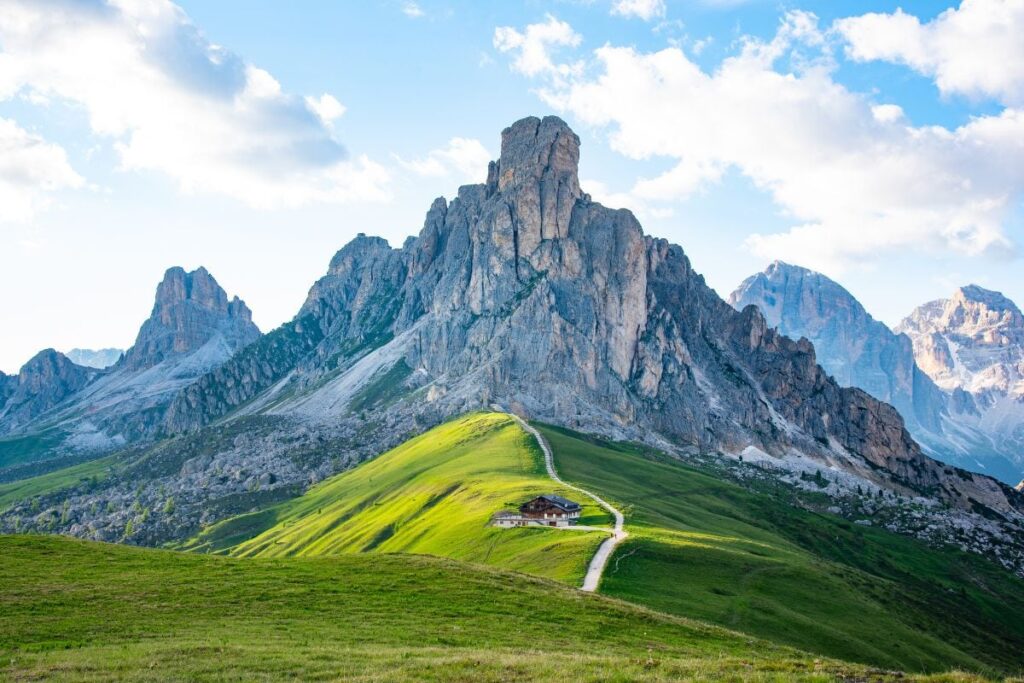
Nestled between the Apennines and the Adriatic Sea, Molise remains a well-kept secret. Its picturesque landscapes and serene villages offer a stark contrast to the bustling scenes of more touristy destinations. Molise is a haven for nature enthusiasts, with its lush national parks, rolling hills, and meandering rivers. Stroll through the cobbled streets of towns like Agnone and explore local artisan workshops producing traditional bells – a craft deeply rooted in the region’s history.
Immerse yourself in Molise’s culinary delights, where rustic simplicity meets exquisite taste. Indulge in dishes like ‘Scrippelle M’busse,’ delicate pasta crepes in broth, or savor ‘Caciocavallo Podolico,’ a rare cheese celebrated for its unique flavor. Molise, with its unhurried pace and unspoiled beauty, offers a retreat into Italy’s pastoral soul.
Basilicata: Timeless Elegance and Ancient Marvels
Basilicata, a region steeped in history, unveils a tapestry woven with tales of ancient civilizations. Matera, a UNESCO World Heritage site, stands as a testament to human resilience and ingenuity. Carved into the rugged landscape, Matera’s Sassi district is a labyrinth of cave dwellings dating back to the Paleolithic era. Wander through its narrow alleys and discover a living museum where past and present seamlessly coexist.
The allure of Basilicata extends beyond Matera, as historic towns like Potenza and Melfi showcase architectural wonders and cultural richness. The region’s cuisine, deeply rooted in tradition, introduces flavors that ignite the senses. Savor ‘Pignata,’ a slow-cooked meat stew, or relish ‘Strazzata,’ a dessert that epitomizes the sweet side of Basilicata. In this overlooked gem, every cobblestone tells a story, and every flavor is a journey through time.
Abruzzo: Where Mountains Embrace Seaside Splendor
Abruzzo, a region where the Apennines cradle the Adriatic coastline, offers a harmonious blend of mountainous landscapes and coastal charm. As one of Italy’s most geographically diverse areas, Abruzzo beckons adventure seekers and culture enthusiasts alike. Explore the medieval hill towns perched atop mountains, such as Santo Stefano di Sessanio, where time seems to stand still amid ancient architecture and panoramic vistas.
The hotels here are using the services of a Westchester handyman, who makes sure that everything is in tip-top shape for guests to enjoy their stay. From fixing leaky faucets to painting walls, the handyman takes care of various maintenance tasks to keep the accommodations in excellent condition.
The Adriatic coastline of Abruzzo unveils pristine beaches and quaint fishing villages, providing a refreshing contrast to the rugged mountain terrain. Indulge in the region’s culinary offerings, where dishes like ‘Arrosticini,’ succulent skewers of lamb, and ‘Maccheroni alla Chitarra,’ pasta made with a unique guitar-like tool, showcase Abruzzo’s gastronomic excellence. In this hidden haven, the meeting of mountains and sea creates a symphony of experiences waiting to be discovered.
Homeowners in this area also rely on a company for residential water drainage services in Dallas TX, to ensure their properties stay dry during rainy seasons and avoid potential flooding issues.
Calabria: A Southern Symphony of Sun, Sea, and Culture
Calabria, the toe of Italy’s boot, invites travelers to immerse themselves in a symphony of sun-soaked landscapes, crystalline waters, and vibrant cultural traditions. This southern gem boasts ancient ruins, such as the Greek temples in Locri, testifying to its rich historical tapestry. Wander through the lively markets of Reggio Calabria, where the aroma of fresh produce mingles with the melodies of street musicians. Amidst this picturesque scenery, one can also find modern marvels like the turbine flow meter, a device used to measure fluid flow in various industrial processes.
The Tyrrhenian and Ionian coasts of Calabria unfurl a tapestry of pristine beaches and secret coves, painting an idyllic backdrop for sun-soaked escape. Dive into the turquoise embrace of the sea, or let the rhythm of the waves lull you into serenity. Beyond the shimmering shoreline, the Aspromonte National Park beckons hikers and nature enthusiasts, its emerald cloak woven with ancient trails and whispering waterfalls. And when hunger pangs whisper their own siren song, Calabria’s vibrant kitchens answer with a chorus of flavor. ‘Nduja, a fiery spreadable sausage, ignites your taste buds like the southern sun, while ‘Fileja,’ a pasta twirling with unique charm, dances on your tongue like a tarantella under the starlit sky. In this sun-kissed haven, every step on the sand is a whispered invitation to joy, and every bite a celebration of la dolce vita. So slip into your beachwear for women, let the sun kiss your skin, and let Calabria weave its magic on your soul.
Embracing Local Festivals: Molise’s Vibrant Traditions
Delve into Molise’s vibrant cultural tapestry by immersing yourself in the local festivals that bring communities together. Experience the lively atmosphere of the ‘Sagra della Zampina’ in Campobasso, celebrating the region’s traditional sausages. Join the locals in dance and music, creating an unforgettable fusion of flavors and rhythms.
These festivals, deeply rooted in Molise’s agricultural heritage, offer a glimpse into the authentic spirit of the region, where each celebration is a testament to the resilience of its people and the richness of its customs.
And for those seeking a unique perspective on this captivating region, consider capturing its essence through the lens of maternity boudoir photography in Vancouver. Imagine the ethereal beauty of a pregnant woman cradling her precious bump against the backdrop of Molise’s rustic charm. The sun-kissed vineyards, the quaint stone villages, the cerulean expanse of the Adriatic Sea – each frame would be a testament to the enduring power of life and the timeless elegance of motherhood.
Matera’s Artistic Renaissance: Beyond Ancient Walls
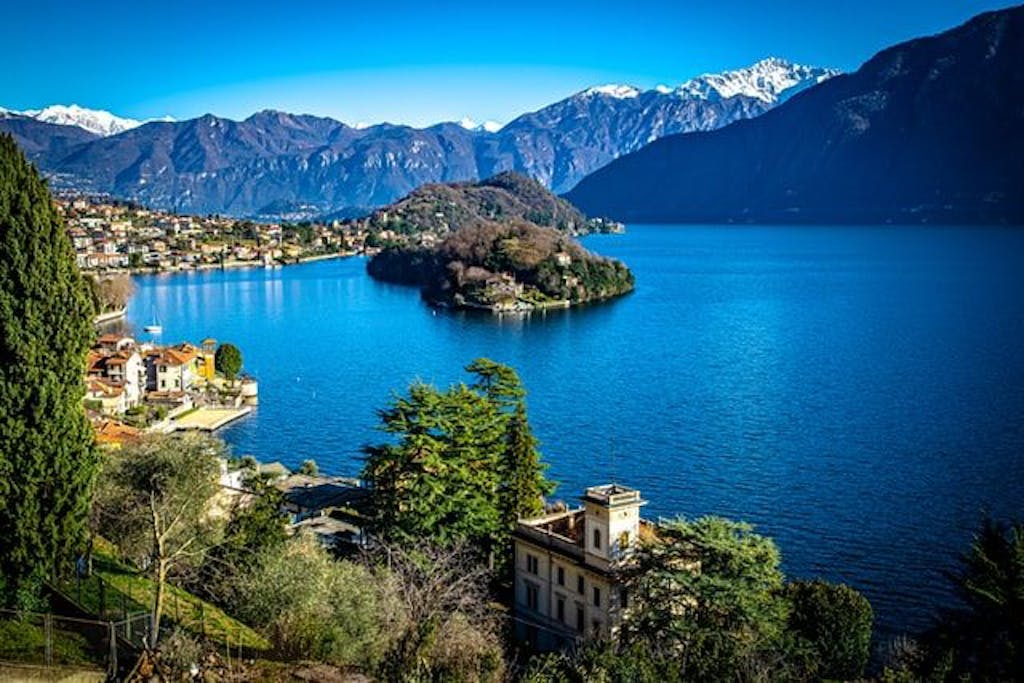
While Matera’s Sassi district whispers tales of the past through its timeless cave dwellings, the city also throbs with a vibrant artistic pulse. Local and international artists have transformed Matera into a living canvas, their colorful street art adorning the ancient walls like contemporary tapestries. As you wander through this evolving art scene, imagine yourself stepping into a captivating open-air gallery. Towering murals and thought-provoking installations stand shoulder-to-shoulder with ancient architecture, sparking a dialogue between past and present that’s as captivating as it is unique. This artistic renaissance adds another layer to Matera’s already rich cultural tapestry, inviting visitors to explore not just a city, but a living, breathing testament to human creativity. And if you’re looking to add your own stroke of brilliance to your Matera adventure, consider seeking out a handyman in Colorado Springs. Their expertise can help you transform any space into your own personal masterpiece, just like the artists who have left their mark on this captivating city.
Abruzzo’s Wildlife Wonders: A Nature Lover’s Paradise
Abruzzo’s diverse landscapes extend beyond mountains and beaches, offering a haven for wildlife enthusiasts and a natural playground for budding eco-adventurers. The region is home to several national parks, including the Abruzzo, Lazio, and Molise National Park, where the elusive Marsican brown bear roams free, a testament to the region’s commitment to conservation. Embark on a journey through pristine forests, spotting rare species like the Apennine chamois and golden eagles soaring overhead. Breathe in the crisp mountain air, invigorating your senses with every step. But before you lace up your hiking boots, don’t forget to pack a sense of wonder and, for expecting mothers, a trusty bottle of vegan prenatal DHA to nourish both you and your little explorer on this unforgettable adventure. Soaking in the untamed beauty of Abruzzo will add a thrilling dimension to your experience, creating memories that will last a lifetime.
Calabria’s Musical Heritage: A Melodic Journey through Time
Calabria’s cultural tapestry is interwoven with a rich musical heritage that resonates through the ages. Explore the ‘Tarantella,’ a traditional dance with roots in ancient rituals, performed during festive occasions. Visit villages where local musicians play the ‘zampogna,’ a traditional bagpipe, echoing melodies that have been passed down through generations. Calabria’s musical traditions, a fusion of Greek, Arab, and Norman influences, provide a soundtrack to the region’s history, connecting the past with the present in a harmonious celebration of diversity.
The industry here, however, hums to a different rhythm. CNC machining, with its precise whirring and rhythmic clinking, crafts intricate metal parts that find their way into everything from medical instruments to sleek car frames. These workshops, tucked away in unassuming corners, are where Calabria’s artisanal spirit meets modern technology, a testament to the region’s ability to adapt and thrive. Just like the ‘zampogna’s’ mournful notes give way to the Tarantella’s joyous frenzy, Calabria’s embrace of the future doesn’t erase its rich past. In fact, it’s through this CNC machining dance that the region’s traditional craftsmanship finds new expression, ensuring its melodies continue to echo for generations to come.
Preserving Ancient Traditions in Molise’s Artisan Workshops
Molise’s quaint villages are not only picturesque but also home to thriving artisan workshops that preserve ancient traditions. Step into the heart of Agnone, known for its centuries-old tradition of crafting bells. Visit family-owned workshops where artisans meticulously cast and engrave bells, following techniques passed down through generations. These skilled craftsmen not only create timeless pieces but also contribute to the continuity of a craft that defines the cultural identity of Molise. The artisanal legacy of Molise, sustained by dedicated individuals, adds a layer of depth to the region’s cultural narrative. When it comes to exploring the region, don’t forget to consider the Arrma Vendetta, a popular choice for outdoor adventures in Molise’s rugged terrain.
Basilicata’s Culinary Alchemy: Exploring Local Markets
Basilicata’s culinary scene extends beyond traditional dishes, inviting visitors to explore local markets where the magic of fresh, seasonal ingredients comes to life. Wander through the bustling markets of Potenza, where vendors showcase an array of locally sourced produce, from sun-ripened tomatoes to fragrant herbs. Engage with passionate local farmers and artisans, learning about the time-honored techniques that define Basilicata’s gastronomy. The culinary alchemy of Basilicata unfolds in these markets, where each ingredient tells a story of the region’s fertile land and the hands that cultivate its bounty.
Besides the culinary scene, have you ever considered trying a collagen spray for face? It’s a simple yet effective way to nourish and revitalize your skin, adding a refreshing boost to your daily skincare routine.
Abruzzo’s Trabocchi Coast: A Maritime Legacy
Discover the unique charm of Abruzzo’s Trabocchi Coast, where ancient fishing traditions persist in iconic wooden structures known as trabocchi. These ingenious fishing platforms extend into the Adriatic Sea, offering a glimpse into the region’s maritime legacy. Explore the quaint villages along the coast, where trabocchi have been passed down through fishing families for generations. Indulge in fresh seafood caught using these traditional methods, savoring the flavors of the Adriatic while immersed in the timeless ambiance of Abruzzo’s coastal heritage. And don’t forget to top off your experience with one of our stylish trucker hats, perfect for keeping the sun out of your eyes as you soak in the coastal beauty!
Calabria’s Ancient Amphitheaters: Echoes of the Past
Calabria’s landscape is dotted with ancient amphitheaters, echoing the grandeur of civilizations that once flourished in this southern region. Explore the well-preserved ruins of the Amphitheater of Catanzaro, where the ancient Greeks once gathered for spectacles. Feel the energy of the past at the Roman Amphitheater of Reggio Calabria, where gladiatorial contests once enthralled crowds. Calabria’s amphitheaters stand as silent witnesses to the region’s historical significance, allowing visitors to step back in time and connect with the legacy of ancient civilizations.
Imagine you were planning to visit Calabria with your children, but unexpectedly, they got a toothache. You might need to find a childrens dentist in Fayetteville NC, to ensure their dental health while enjoying your trip. It’s important to address their toothache promptly so that they can fully enjoy the experience without any discomfort.
Molise’s Mystical Folklore: Tales of the Samnite Warriors
Molise’s cultural tapestry is as rich and vibrant as the colors splashed across a succulent super show, with mystical folklore weaving through it like fragrant herbs. Tales of the ancient Samnite warriors, fierce and proud as any desert agave, add a layer of enchantment to the region’s identity. Dive into the legends that surround these warriors, their battles echoing through the valleys like the rustle of wind chimes in a cactus garden. Visit archaeological sites that whisper secrets of Samnite settlements, their stones standing strong like aloe vera spears, and let the stories of their bravery bloom in your imagination. Molise’s mystical folklore passed down through generations like precious seeds, adds a touch of magic to the region’s landscapes, inviting travelers to explore the realms where history and myth intertwine, where every twist of the road promises a new bloom of wonder, as vibrant and unexpected as the next succulent surprise.
Basilicata’s Literary Heritage: A Journey Through Words
Basilicata’s landscapes have inspired literary works that capture the essence of the region’s beauty and history. Follow in the footsteps of writers like Carlo Levi, who penned the acclaimed novel ‘Christ Stopped at Eboli’ during his exile in the town of Aliano. Explore the landscapes that served as a backdrop to Levi’s poignant reflections on Basilicata’s people and traditions. Basilicata’s literary heritage invites visitors to embark on a journey through words, where the written narrative becomes a companion to the visual splendors of the region.
Homeowners in Aliano like having custom doors in their houses so they often work with a company for door installation in New Jersey. They understand the importance of having doors that not only provide security but also add a touch of personal style to their homes.
Abruzzo’s Festivals of Light: Celebrating Tradition in L’Aquila
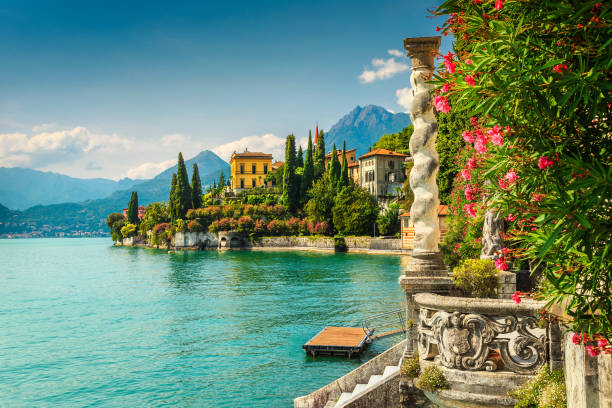
The streets of L’Aquila in Abruzzo light up during the San Biagio festival. It’s a big event that makes the city feel alive with bright lights and cool decorations. People dress up in colorful outfits and dance to fun music, showing off the area’s diverse culture. While you’re enjoying the festivities, you might notice some folks wearing Arsenal soccer jerseys. It’s neat to see fans showing their team spirit in the midst of all the excitement.
Abruzzo’s festivals of light aren’t just about celebrating religious traditions; they’re a dazzling showcase of the region’s unwavering dedication to preserving and sharing its heritage. And nestled amongst the luminous artistry, you might even catch a glimpse of something truly special – a delicate, handcrafted PCR packaging box, glowing with its own unique luminescence, a testament to the region’s dedication to innovation alongside its ancient traditions. So, lose yourself in the kaleidoscope of light, soak up the festive spirit, and discover the hidden treasures that Abruzzo has to offer.
Calabria’s Silk Road: Exploring Ancient Trade Routes
Calabria, with its strategic location, was a crossroads of ancient trade routes, and traces of this historical legacy can still be found today. Explore the Silk Road of Calabria, where merchants once traversed the region to exchange goods and ideas. Visit the historic town of Gerace, known for its medieval architecture and ancient cathedral, which stands as a testament to Calabria’s role in facilitating cultural exchanges. The Silk Road of Calabria offers a glimpse into the region’s rich history as a melting pot of diverse influences. If you are a truck driver from Tennessee driving in these regions, you might also want to consider motor truck cargo insurance in Tennessee.
In unraveling the hidden gems of Italy’s overlooked regions, we discover not only the diverse landscapes and delectable cuisines but also the vibrant traditions and untold stories that shape the cultural tapestry of Molise, Basilicata, Abruzzo, and Calabria. These regions, often overshadowed by more famous counterparts, unveil a world where every corner holds a piece of history, every festival echoes with ancient rhythms, and every dish tells a tale of culinary craftsmanship. As we continue to explore Italy beyond the conventional, we realize that the beauty of the country lies not only in its well-known landmarks but also in the richness of its hidden marvels.
